The Gunkanjima primary and middle school are one of the landmarks of the island. It is impossible to miss even with a brief boat tour around. If you don’t know about the abandoned island yet, check my summary first: Gunkanjima: Stories & Photos. Otherwise, come with me and let’s meet the ghost teachers.
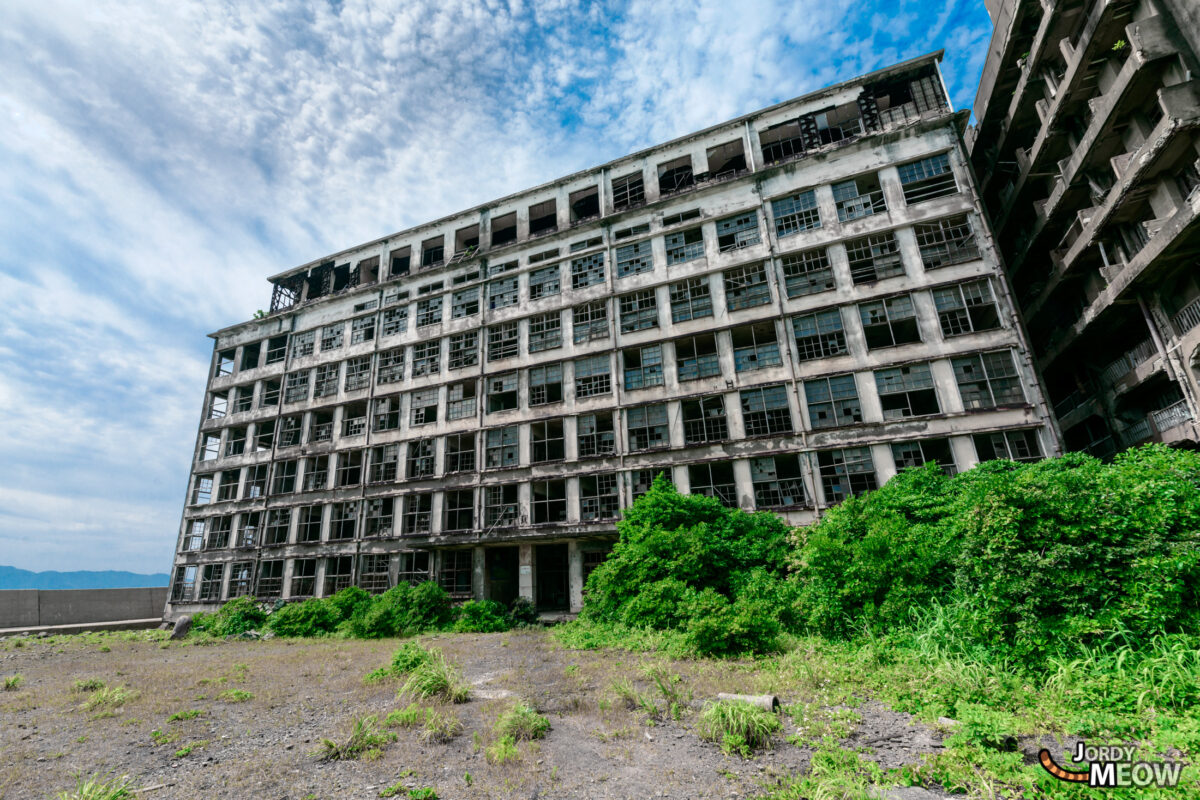
The building was built in 1958 and it is one of the youngest on the island. There are 7 floors: from the ground floor to the 4th floor is primary school, from 5th to 7th is the middles school. On the 7th floor there are also theatre, gymnasium and other multi function rooms. A clown who transforms into a wicked tiger welcomed us.
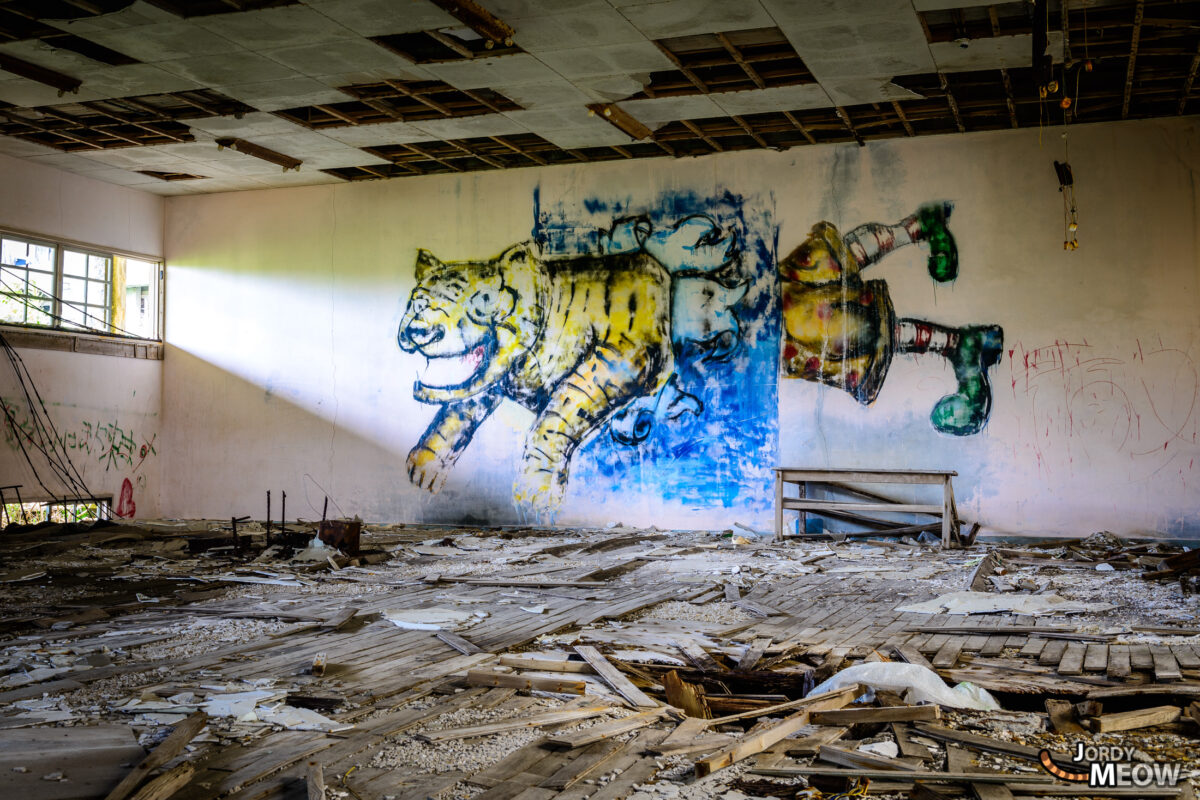
Music Class
We will start with a room full of light and charming melody. The wind whistles through the wide-open windows, when it cease, you hear the ocean waves breaking on the concrete walls of the island. The silent piano seems to be listening as well.
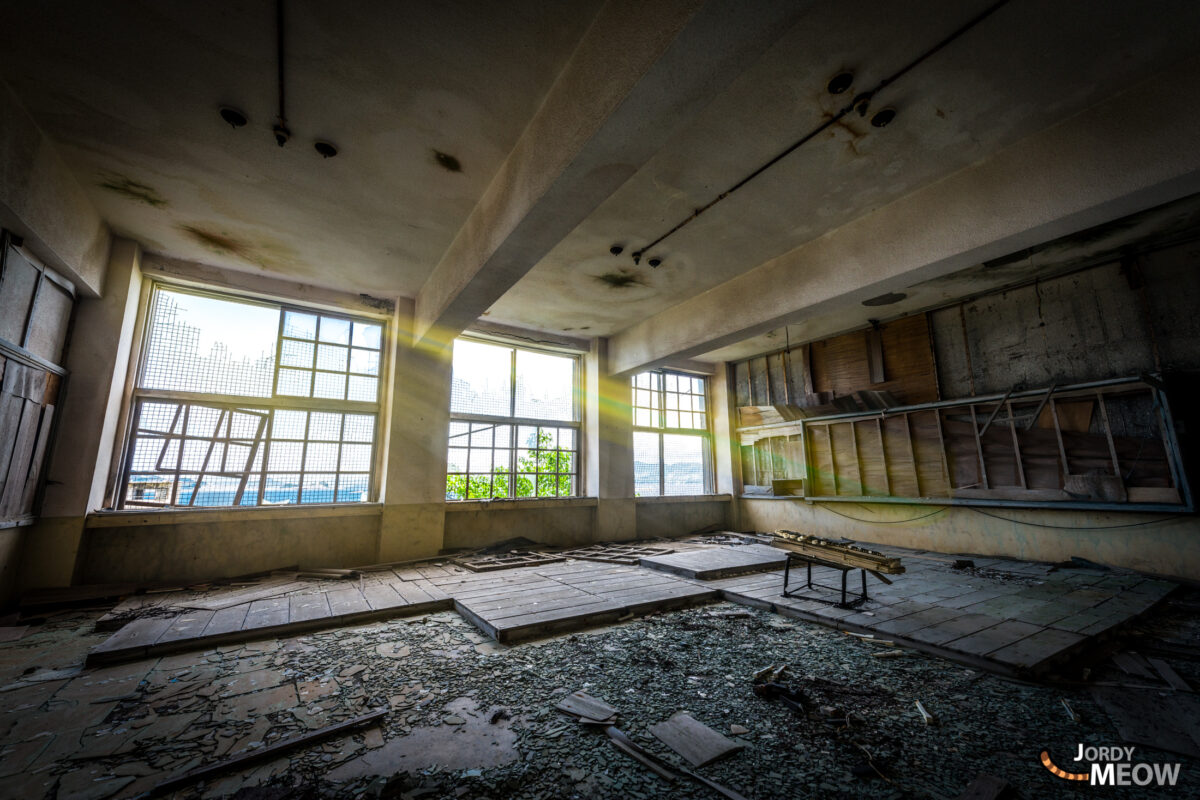
Behind the piano, the old music teacher is trying to hold on to the only keys left on this instrument; each of them is still rich in memories.
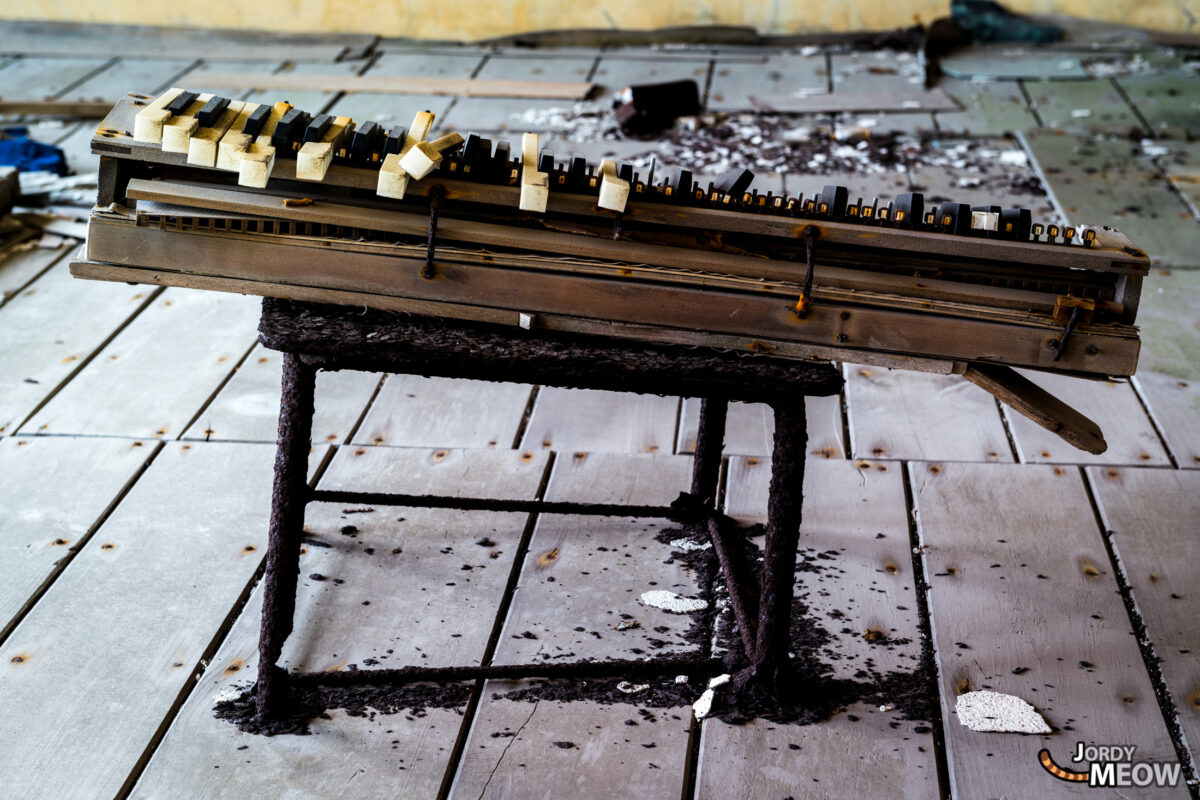
Staff Room
Sometimes the ghosts of teachers meet here and watch the signatures left on the blackboard. These are of the proud explorers, for whom this place is fantastic and exciting (including us obviously). What they tend to ignore, however, is that this island was a living hell. But luckily, at least the school was a concentrate of joy; a quiet oasis in the midst of a hellish metropolis.
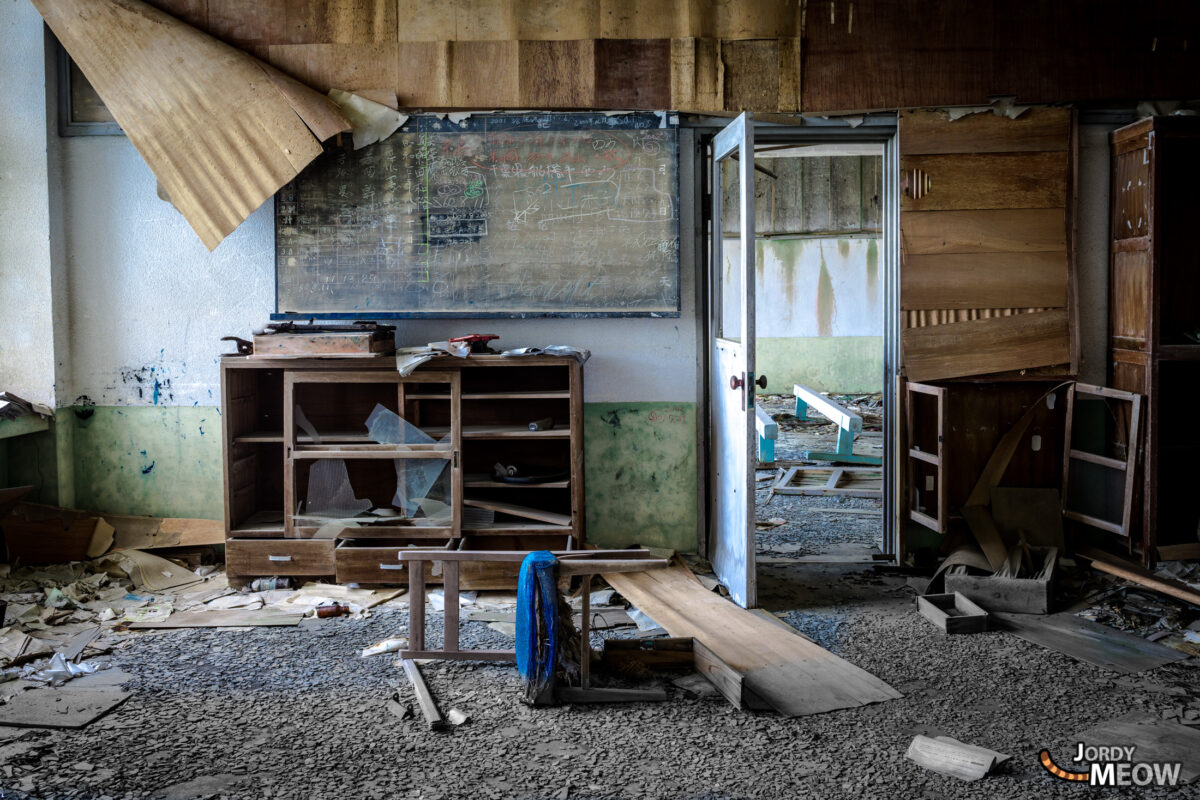
The island has seen some of its students come back out of curiosity. Grown up as they all are now, they do not dare to enter the old school, instead they prefer to remember the good old time from vast playground outside, and then leave.
The wind blows, wakes up the old record player Victor whose diamond is still intact, squealing on the charred vinyl. The teachers are alone again.
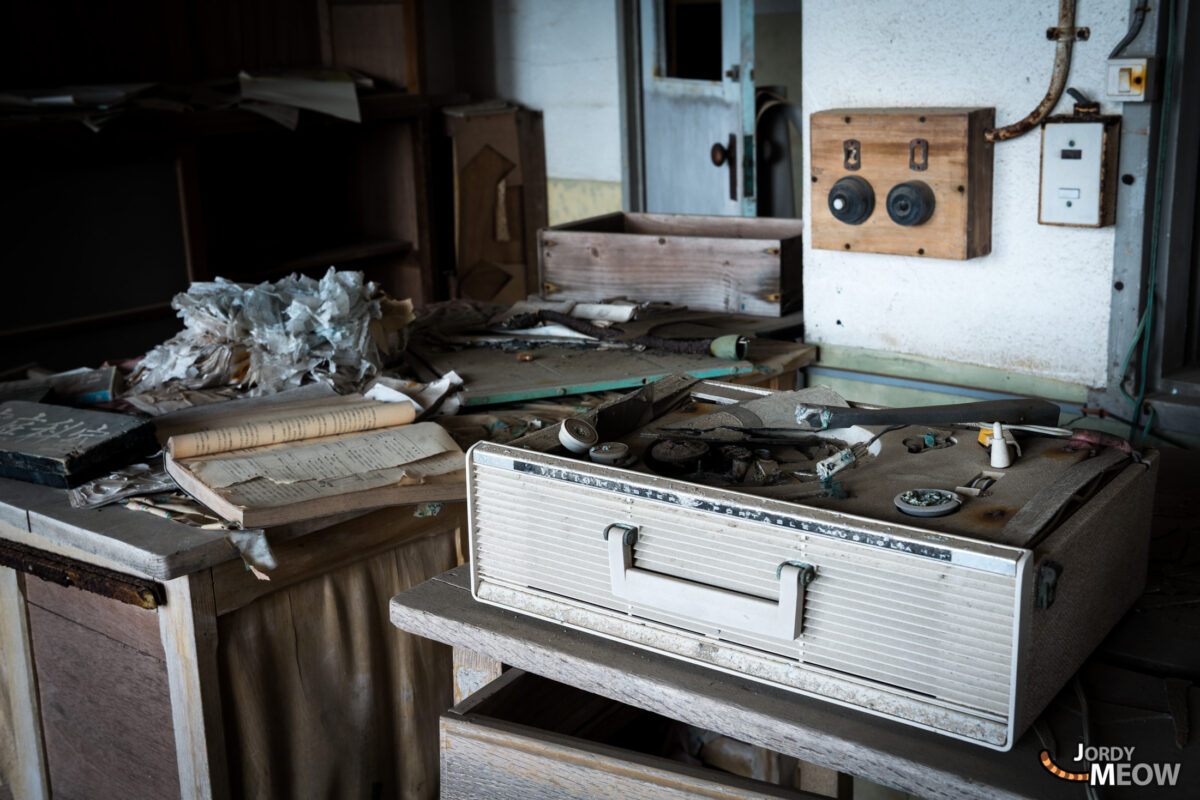
The Administrative Room
This room has a well interesting machine. I have seen the same machine at work; it was exhibited inside a glass case.
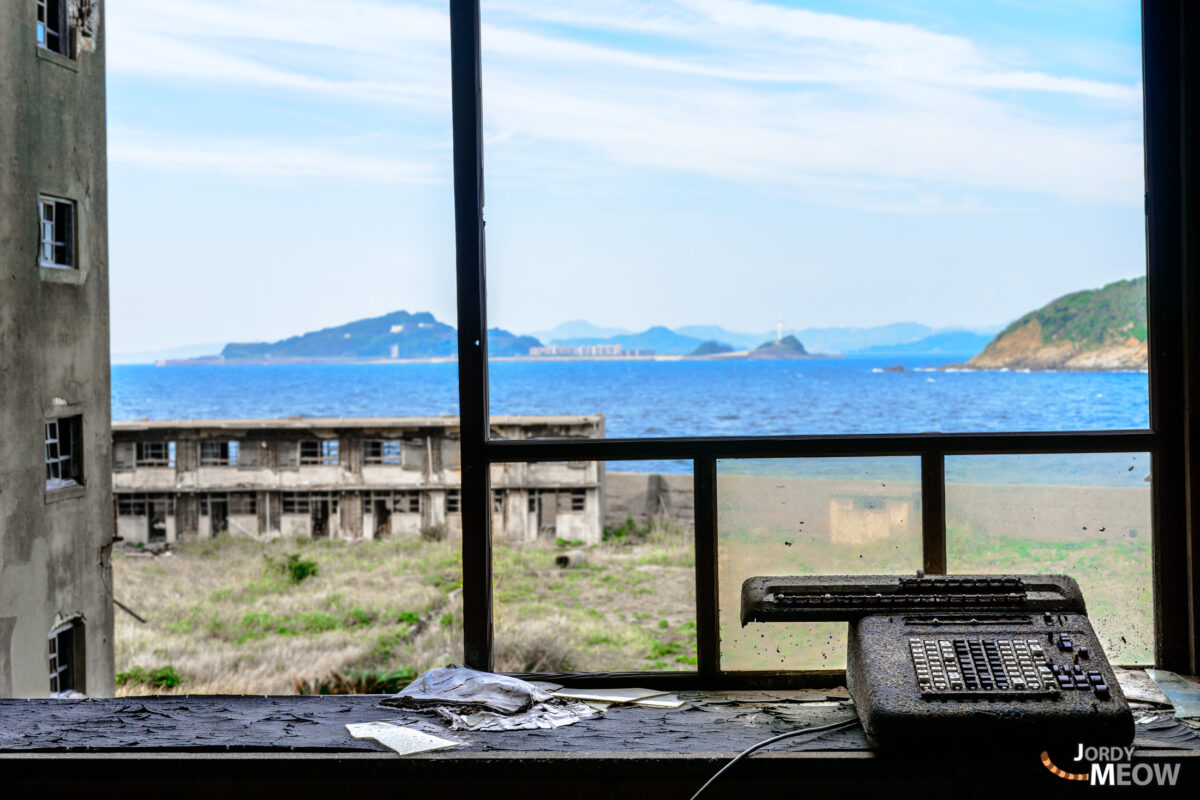
This is a mechanical calculating machine that is 40 years old. To use it, press all digits of the number simultaneously (there are separate lanes for each digit), then you pause to enter the arithmetic process you want. It looks very much like the Friden STW-10.
This advertisement states that the machine is much more available than cars or even nylons. Surely during the time of war? Another interesting fact: the person in charge of running this kind of machine was then called the computer. The ‘computer’ performs the calculation for the users, and give them the result straight away. The Friden was extremely popular at the time and was used until 1966. But in reality… I’m not sure that this machine on Gunkanjima is the Friden. It is impossible to find a similar model on the Internet! Try for it yourself! A collector’s item, that’s for sure.
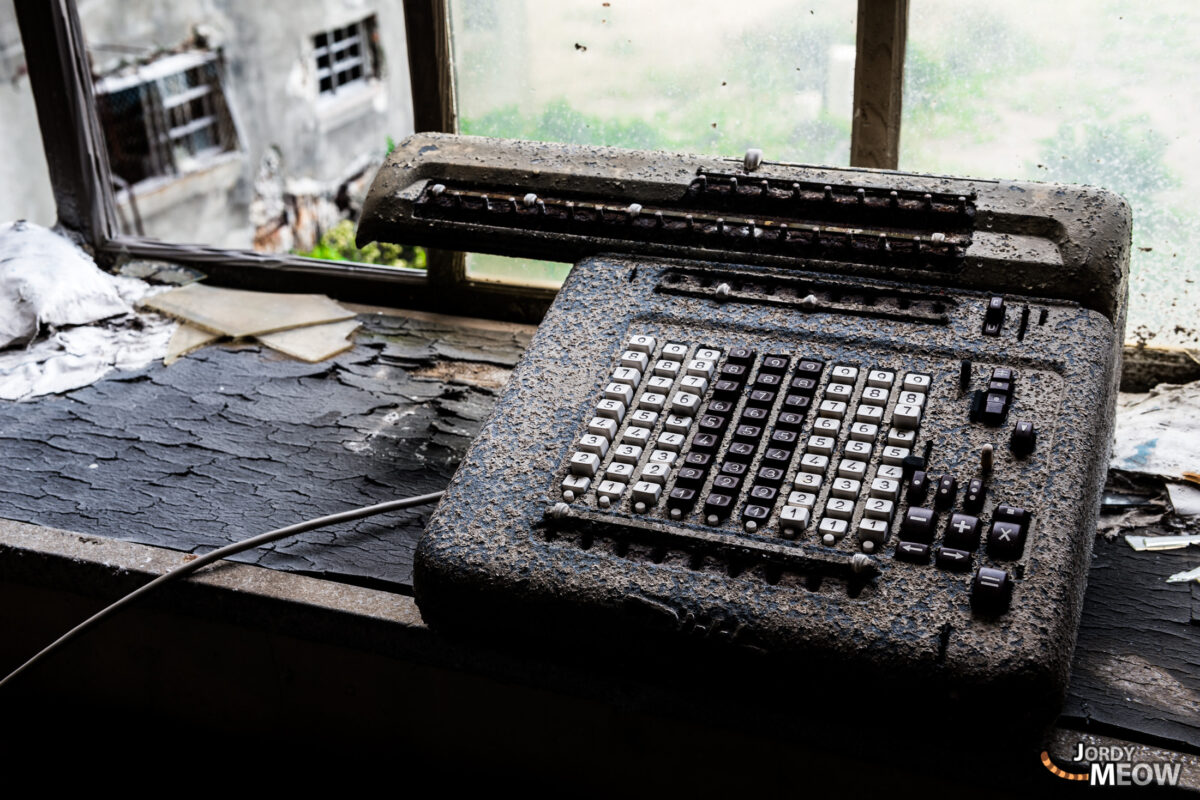
Being the computer for the dean of Hashima school must have been a very good experience; not so much work with only a few pupil, and a brilliant view to enjoy always.
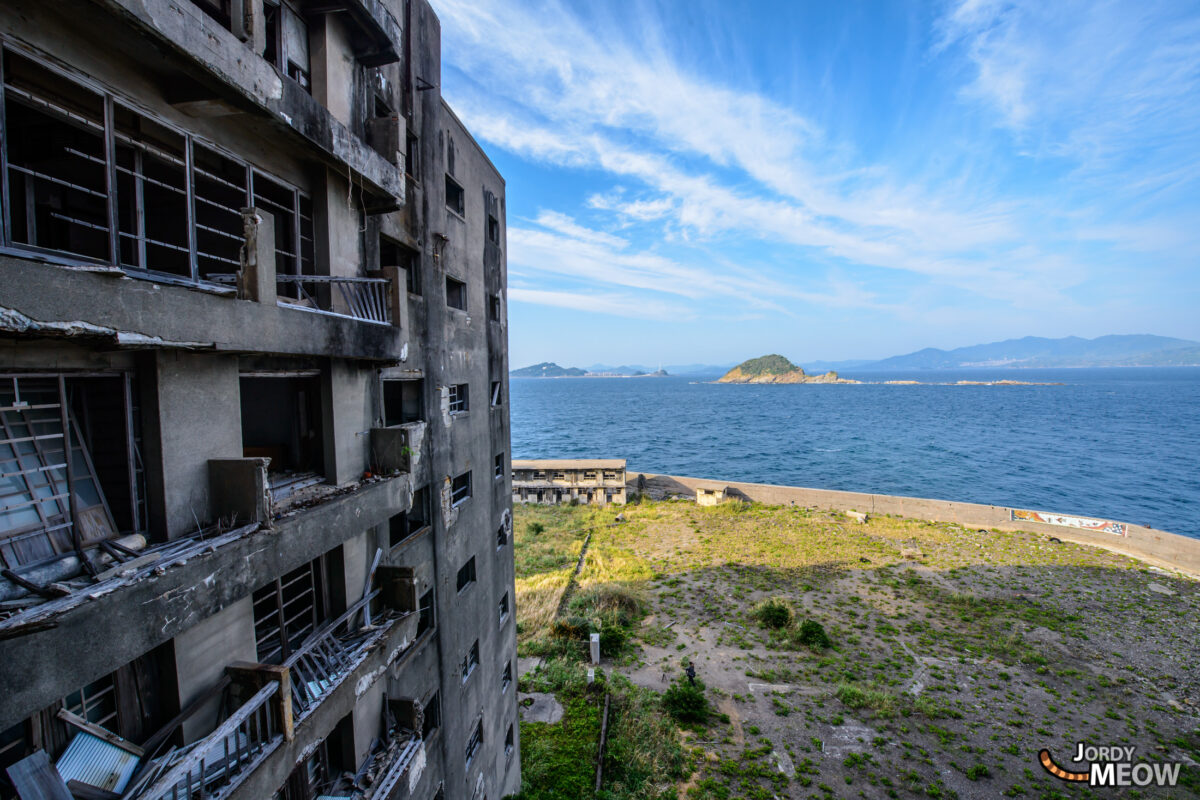
Arithmetic Class
It’s time for some math. This room is very sad: we do not feel any presence except that of the old abacus.
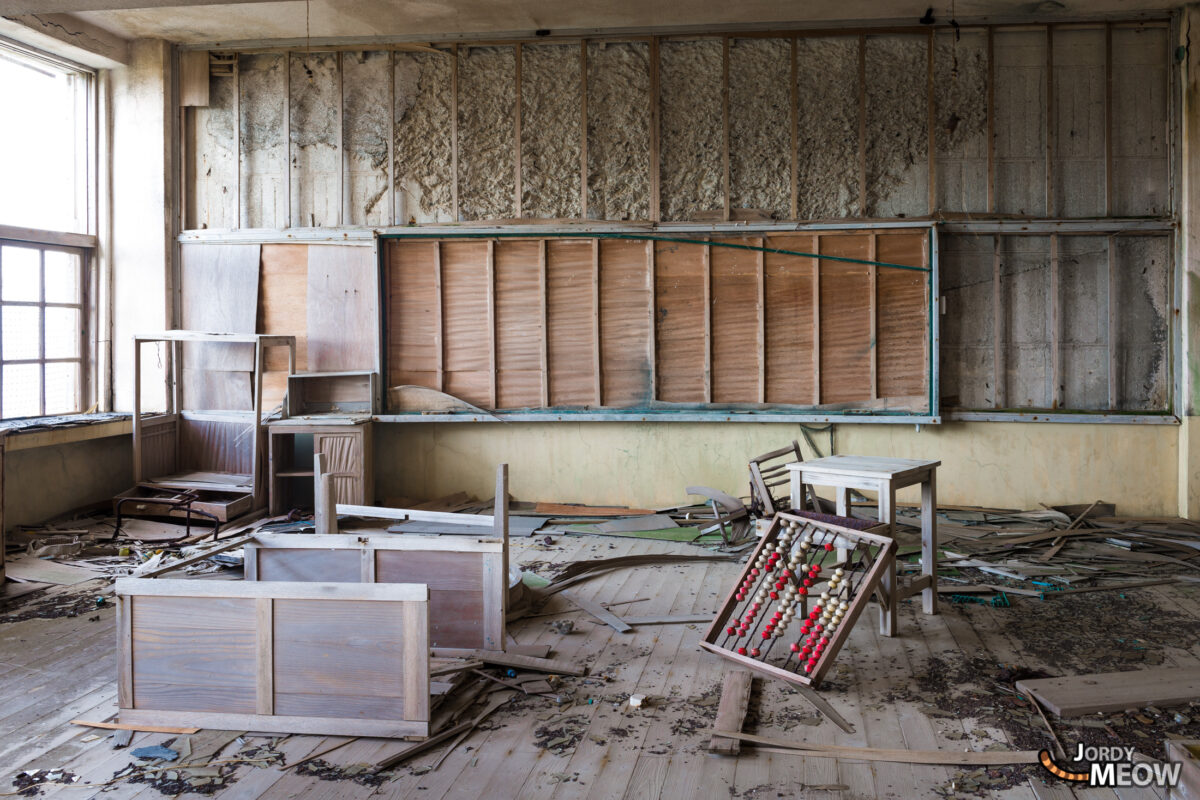
The “dust-table” is the literal translation of abacus from Greek (abax in Greek). This name suits it very well here. It seems that the Japanese still use the abacus, particularly at school (but a smaller version).
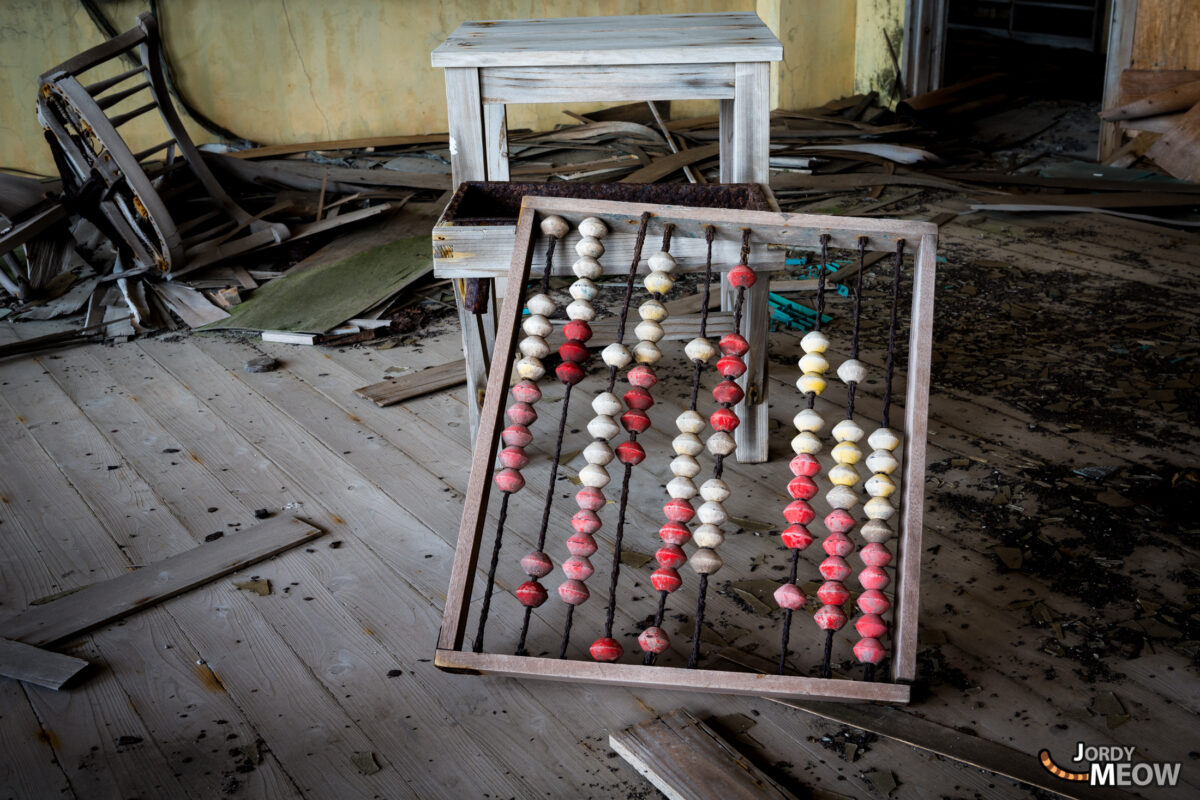
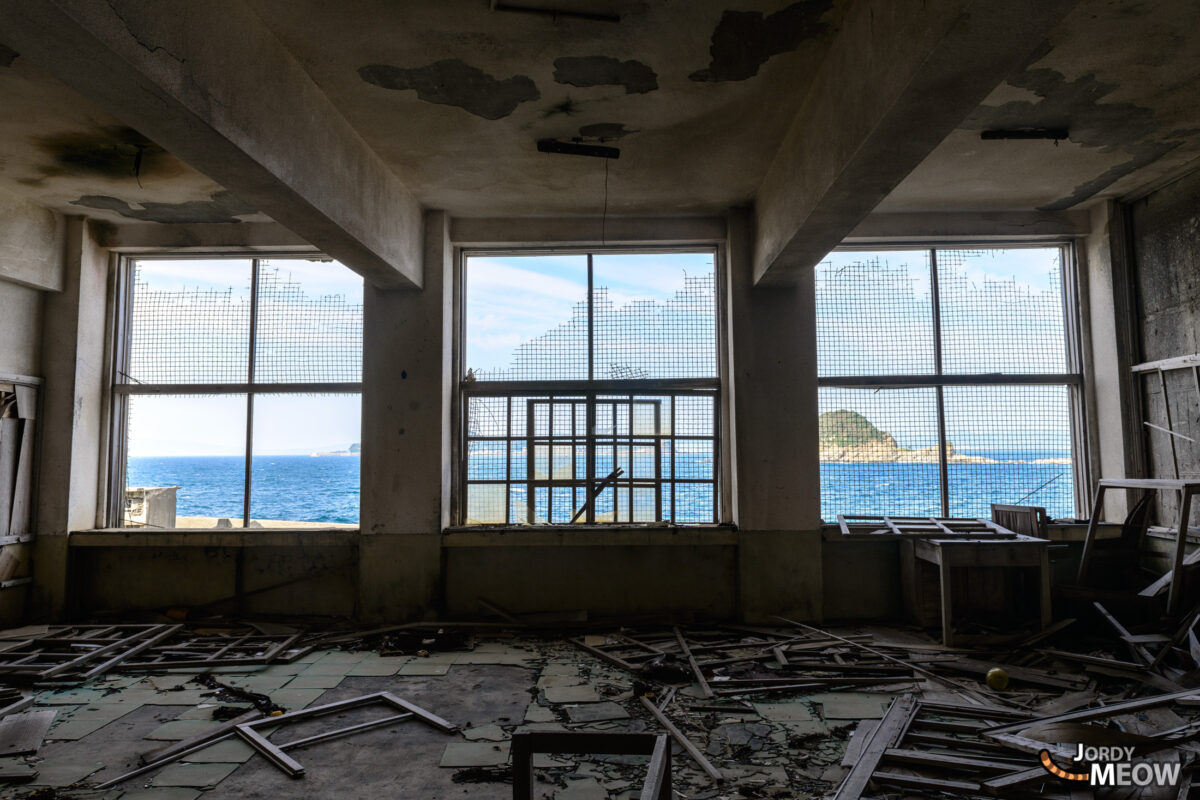
Chemistry Class
Small lab bottle on the ground, nothing else … Petrochemicals has ended everything.
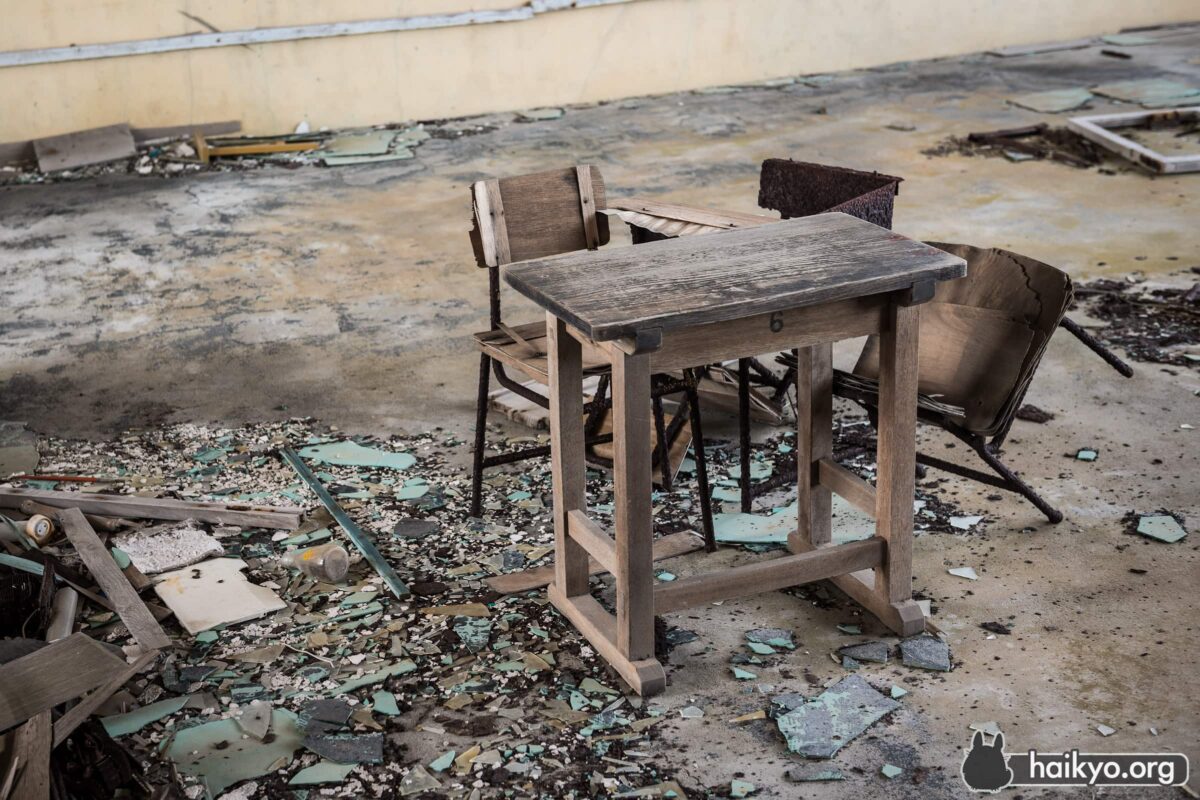
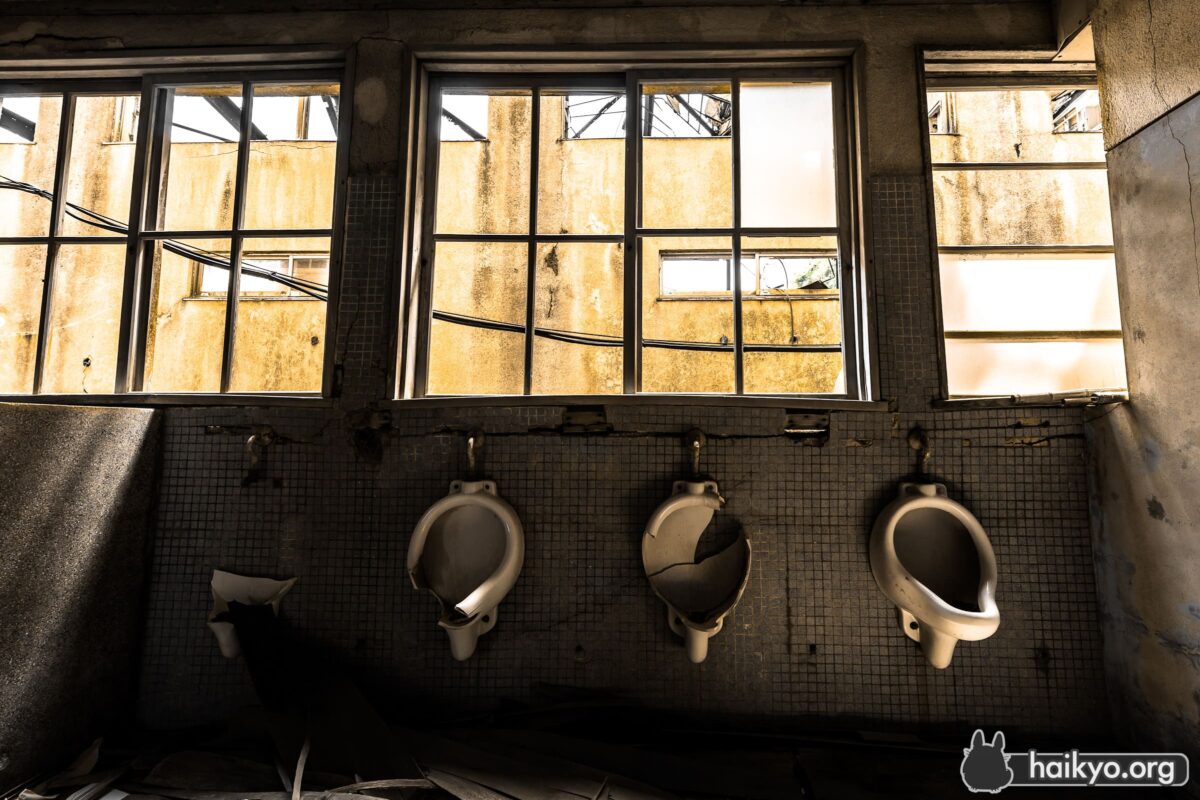
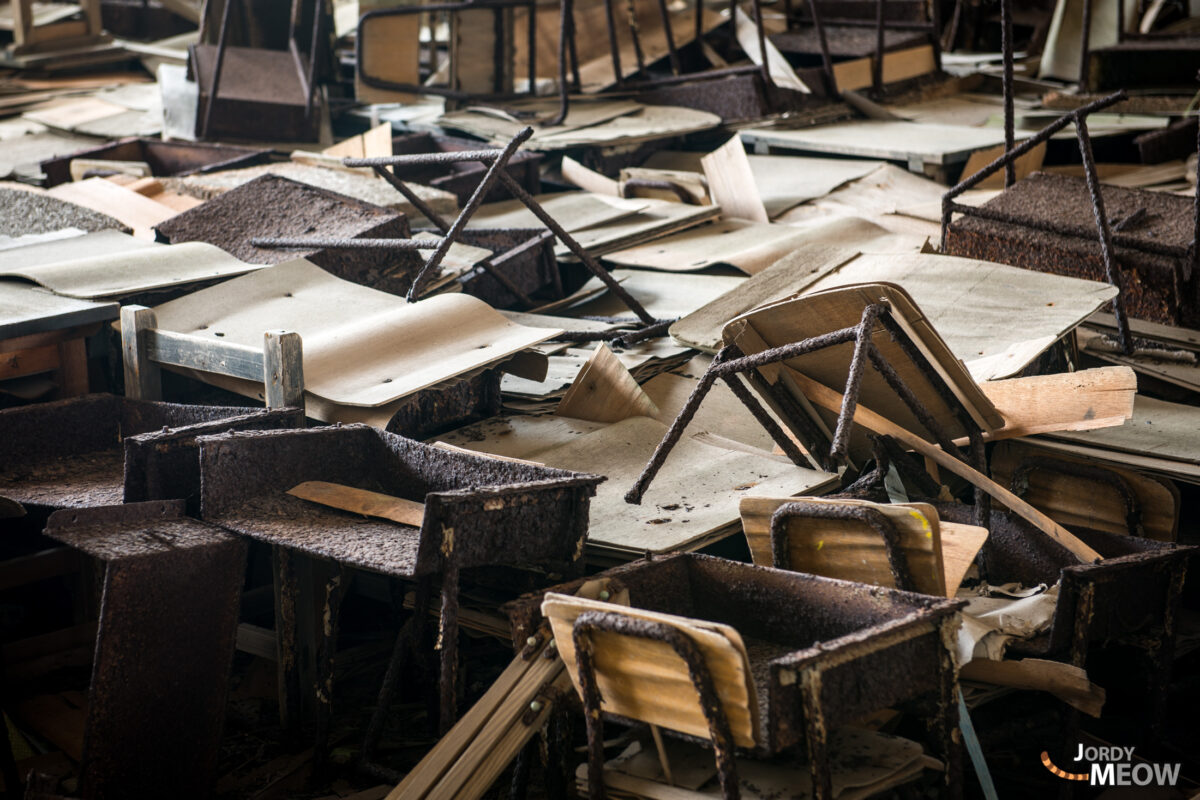
Physics Class
It seems that each room contains an object, its object. Perhaps it is to keep its soul?
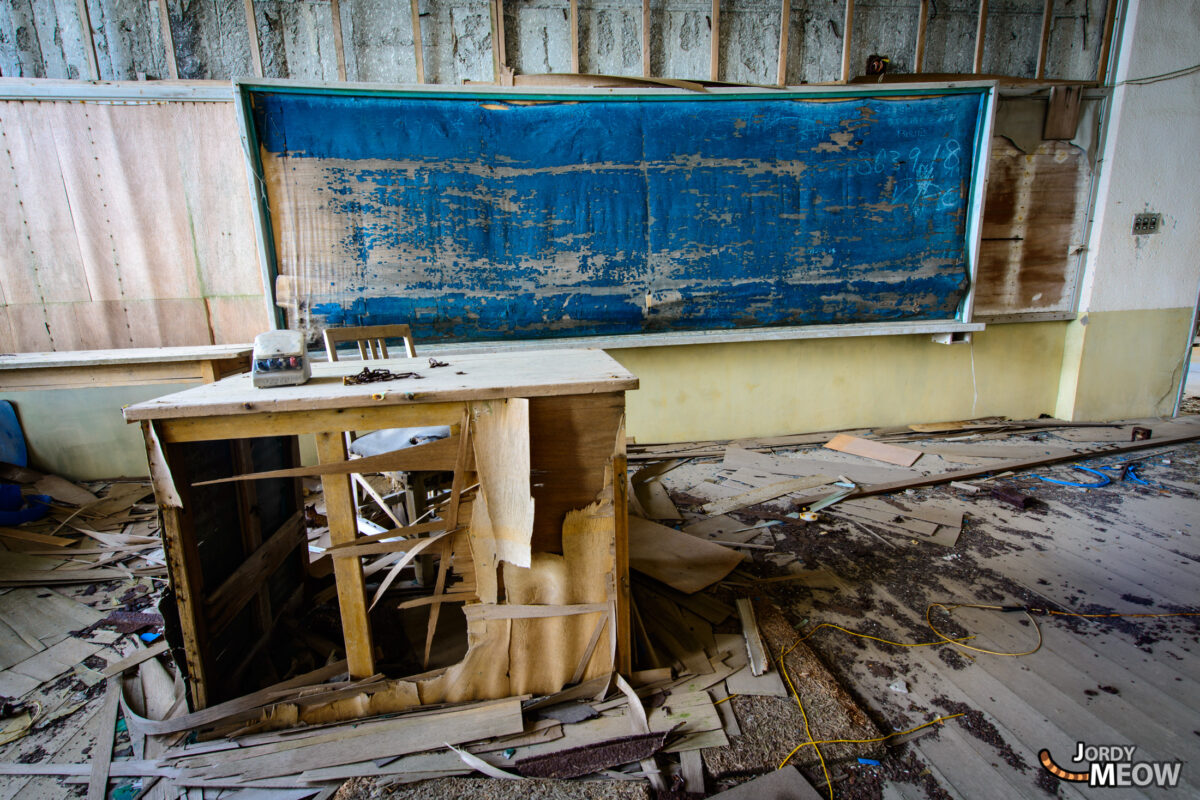
The ground of the classroom is covered with the broken pieces of the blackboard. They are all blue! Was the blackboard this colourful in the past?
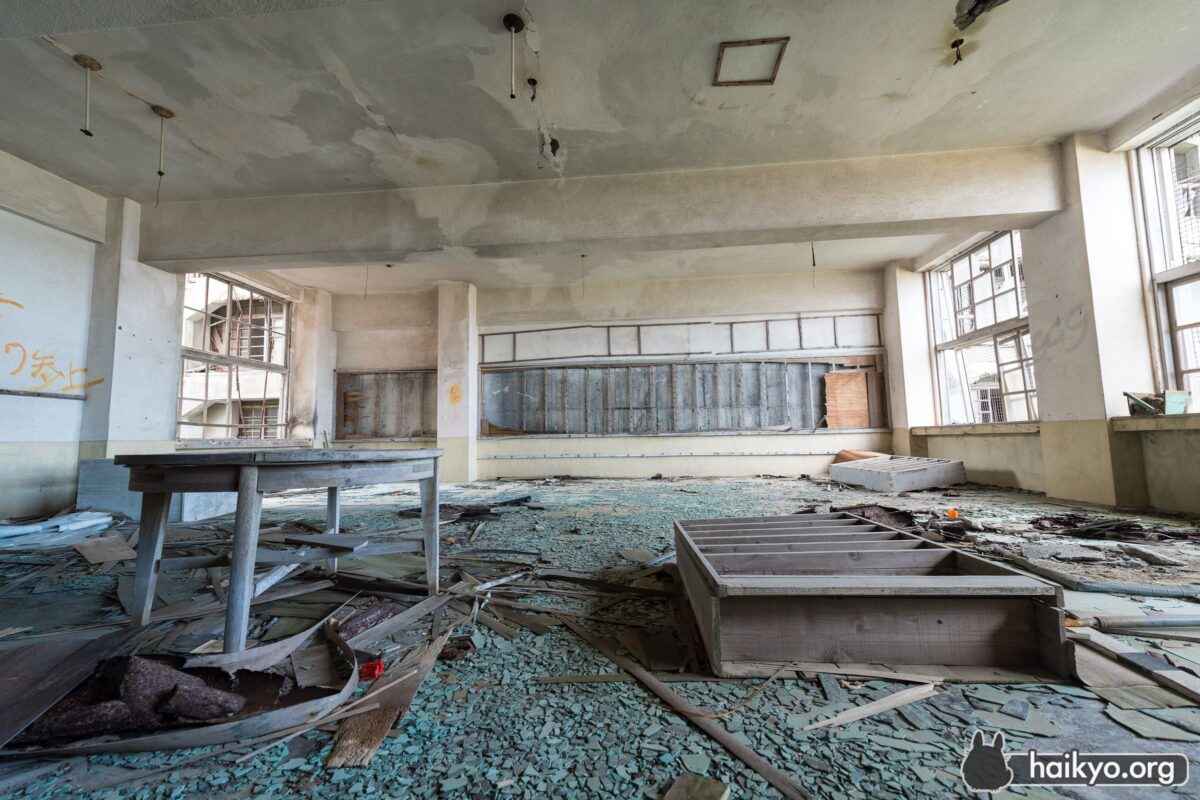
Sewing Class
A treadle sewing machine. Apparently it is a Singer. In Japan, all schools still have sewing classes, and increasingly the Japanese are interested in old machines like this. There are even special coffee shops in Tokyo with sewing workshops.
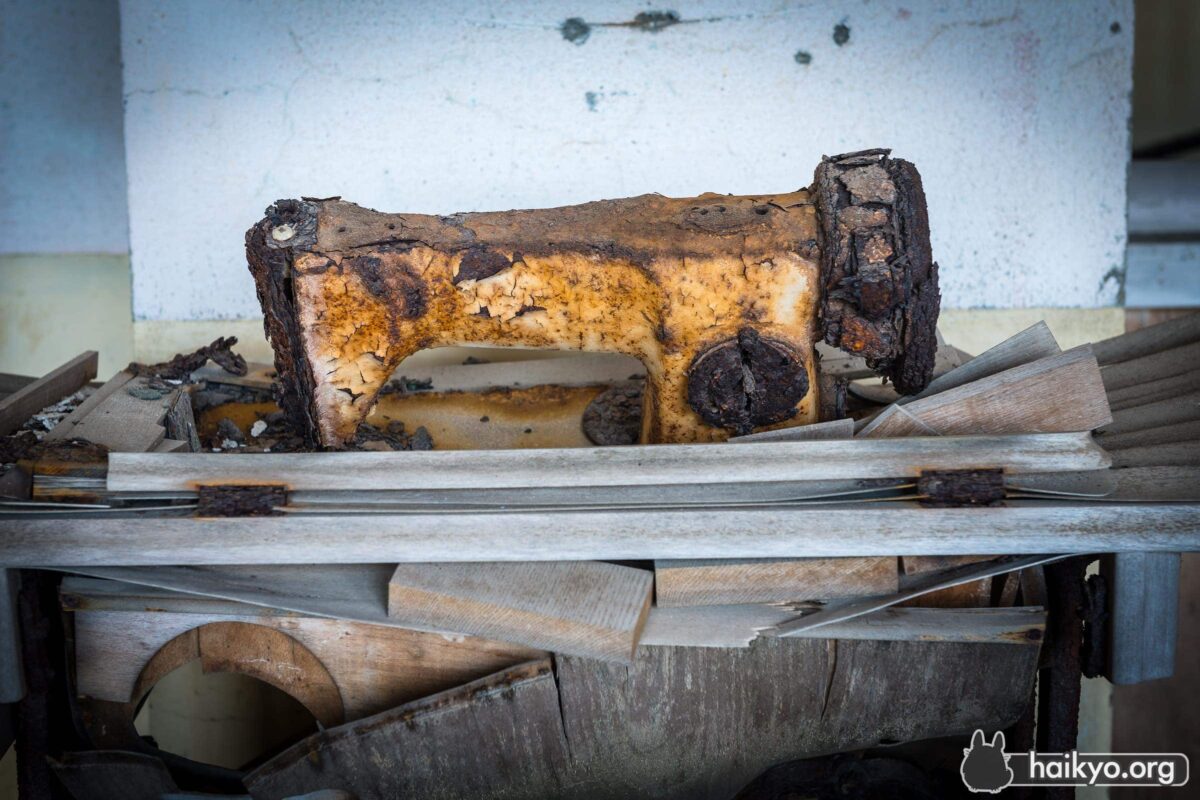
An elevator was installed in the school in 1970 and was the only elevator on the island. However, it was only used to transport food from the canteen.
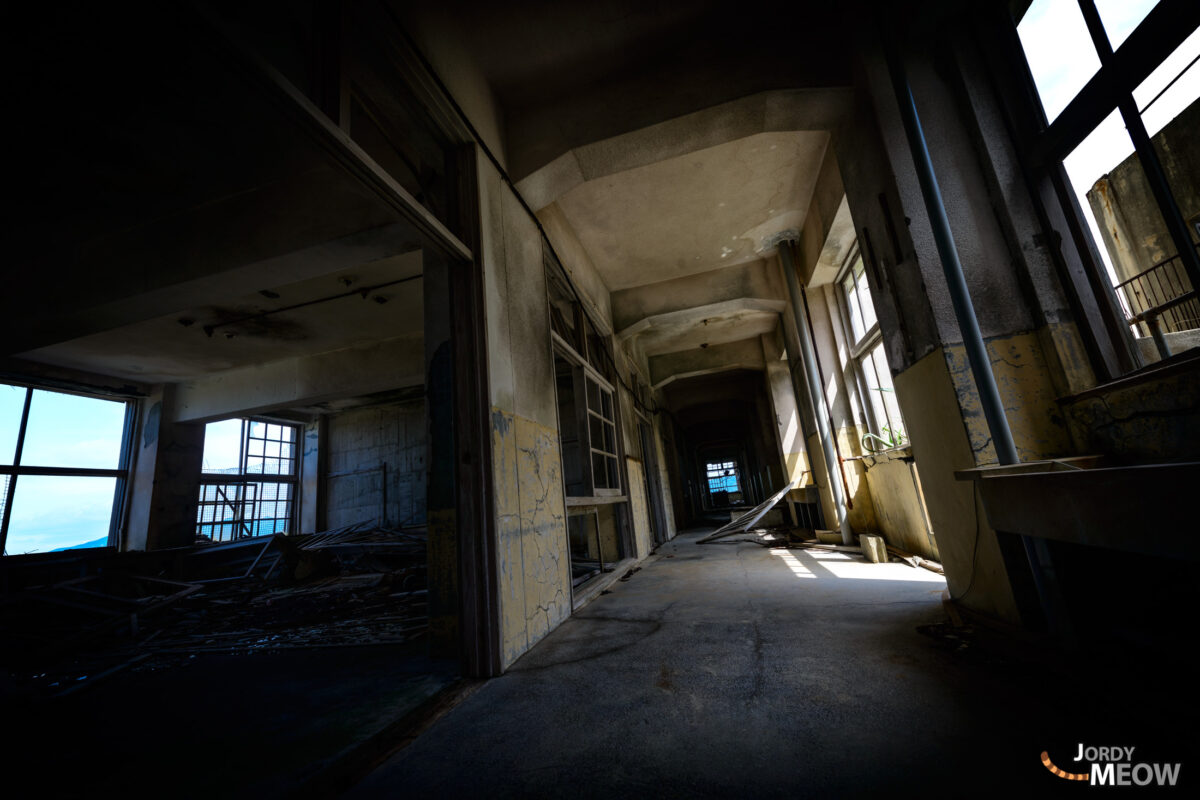
English Class
The 1970s in Japan marks the beginning of violence in schools and the degradation of the notions of respect in Japan. The Japanese education system has been completely changed by American students; being freer, they began to revolt against the authorities to defend their rights and ideas on all subject. But here on Gunkanjima, we are very far from all these events.
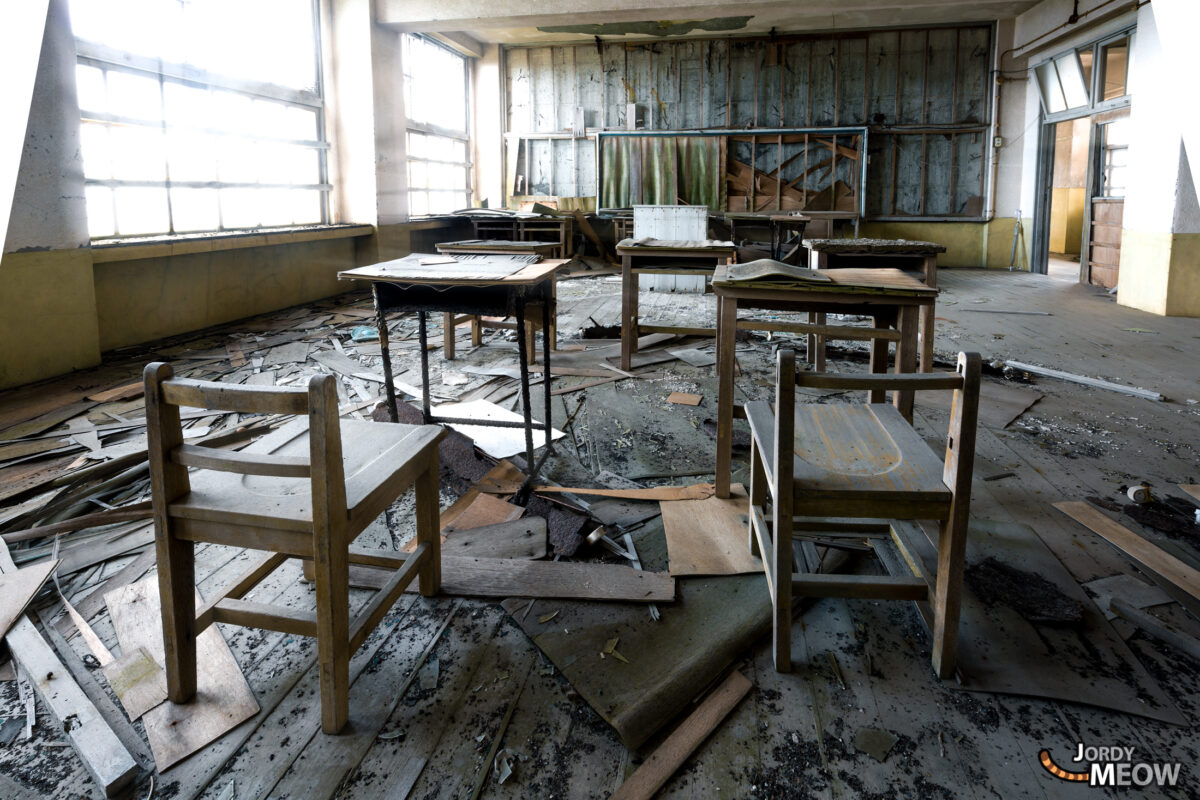
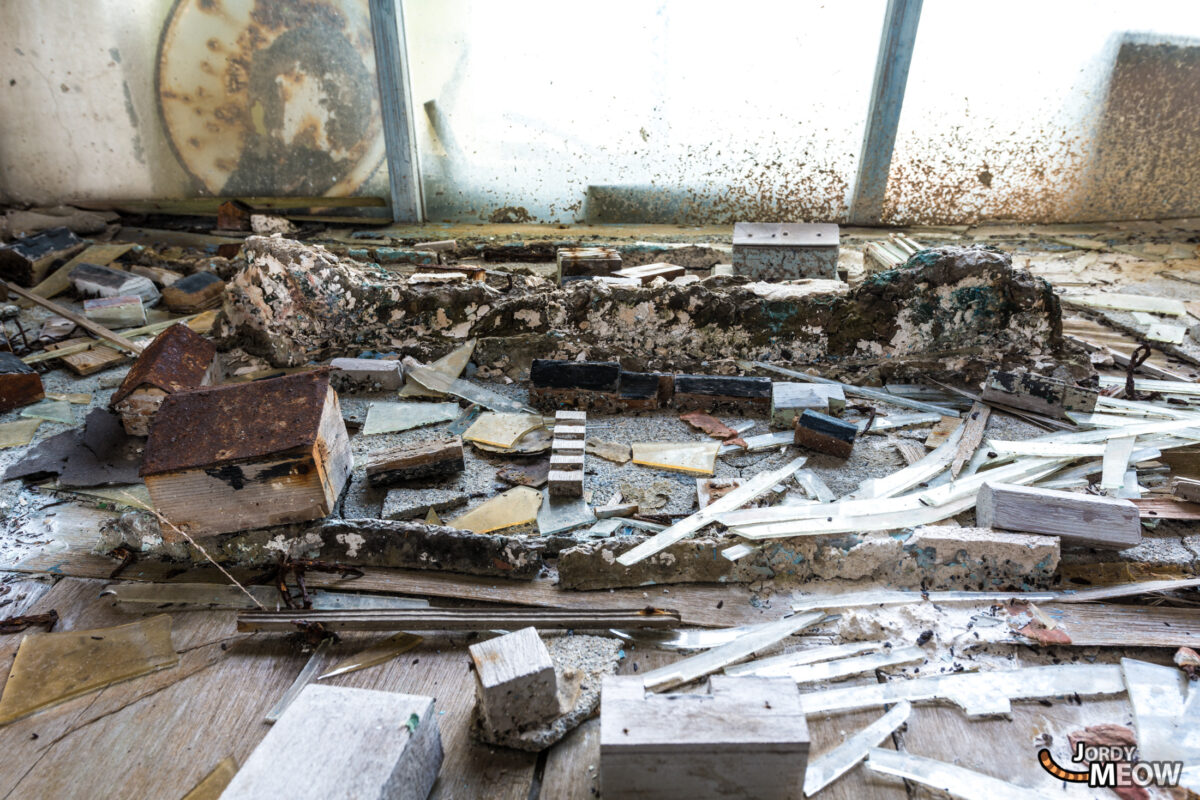
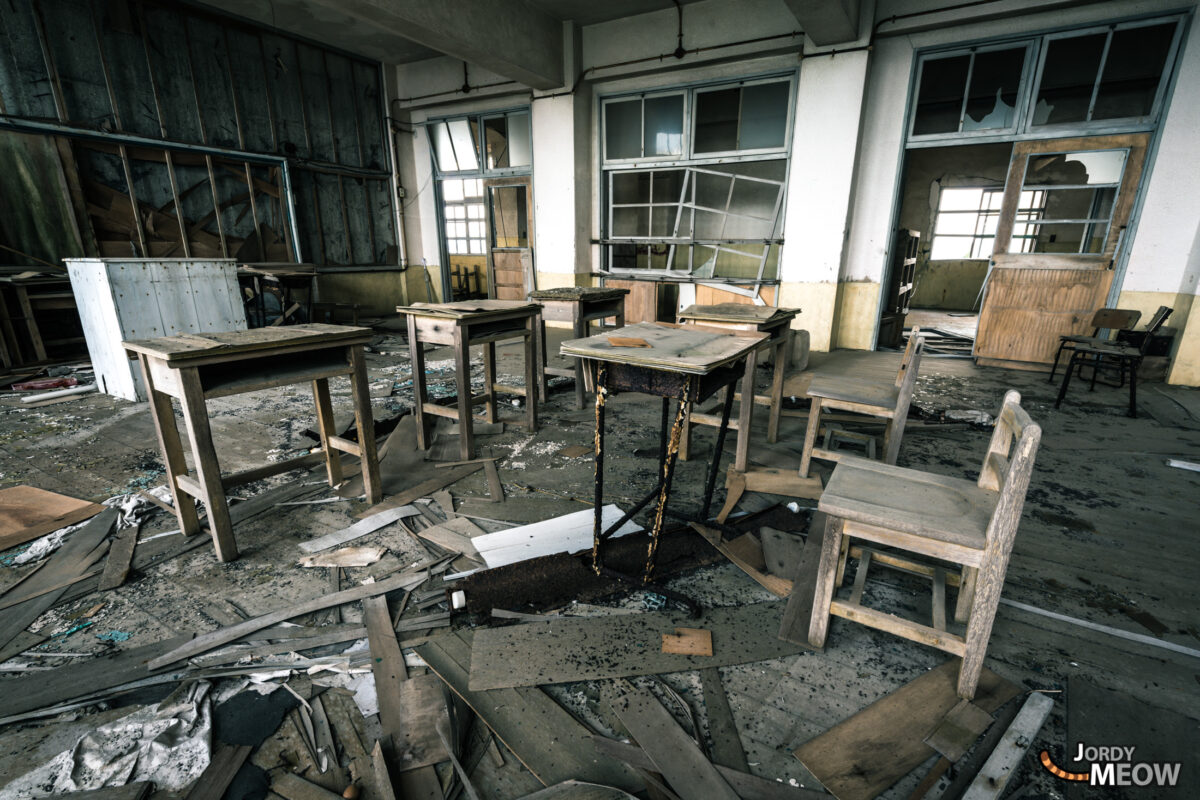
Ghosts recall seeing a light one night in this beautiful room at the corner of the school. A candle was lit in the old abandoned glass bulb. Among some young people. They shared chocolate, a little alcohol, and many stories… finally they fell asleep, while fighting against the humid wind and coldness.
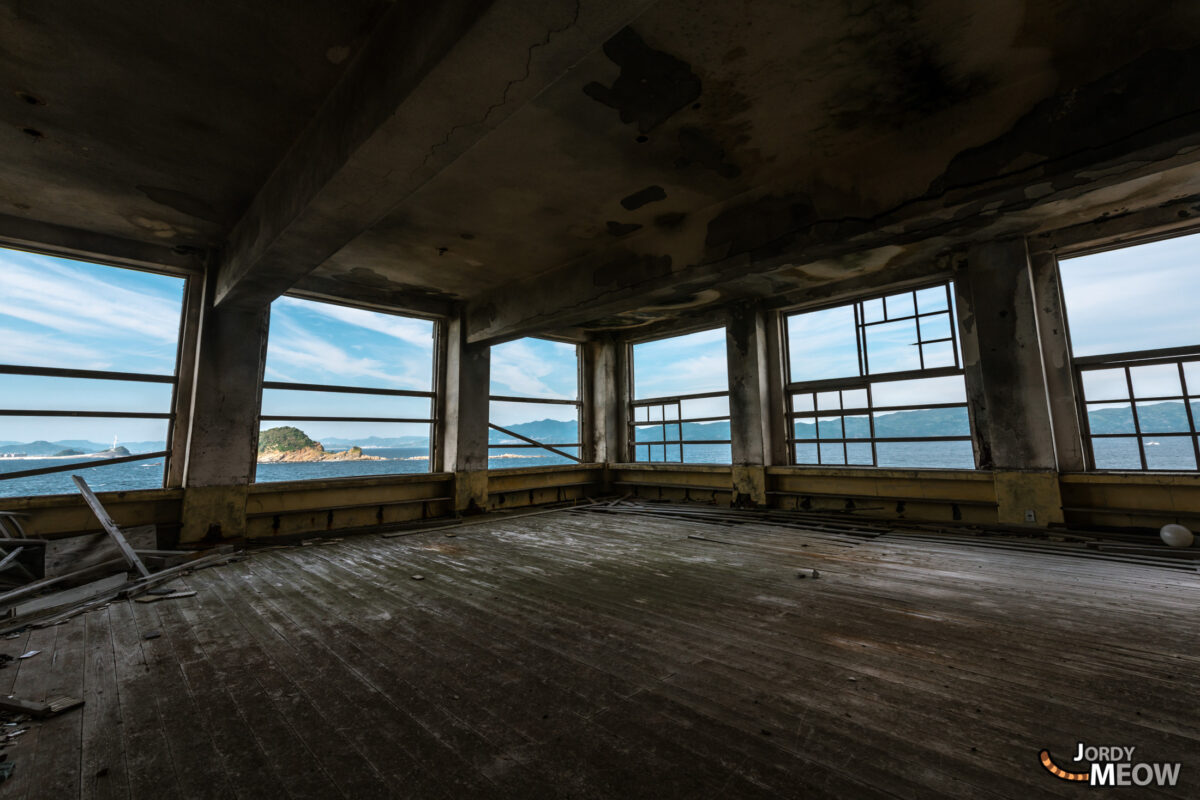
Theatre and Gymnasium
Roothless typhoons have seriously damaged the building and we can now see its foundation exposed. The school is actually built on an artificial section of the island. The real Hashima island stands only in this mountain in the middle, the rest is all concrete. Thus, depending on the tides, the basement of the school can be filled with water…
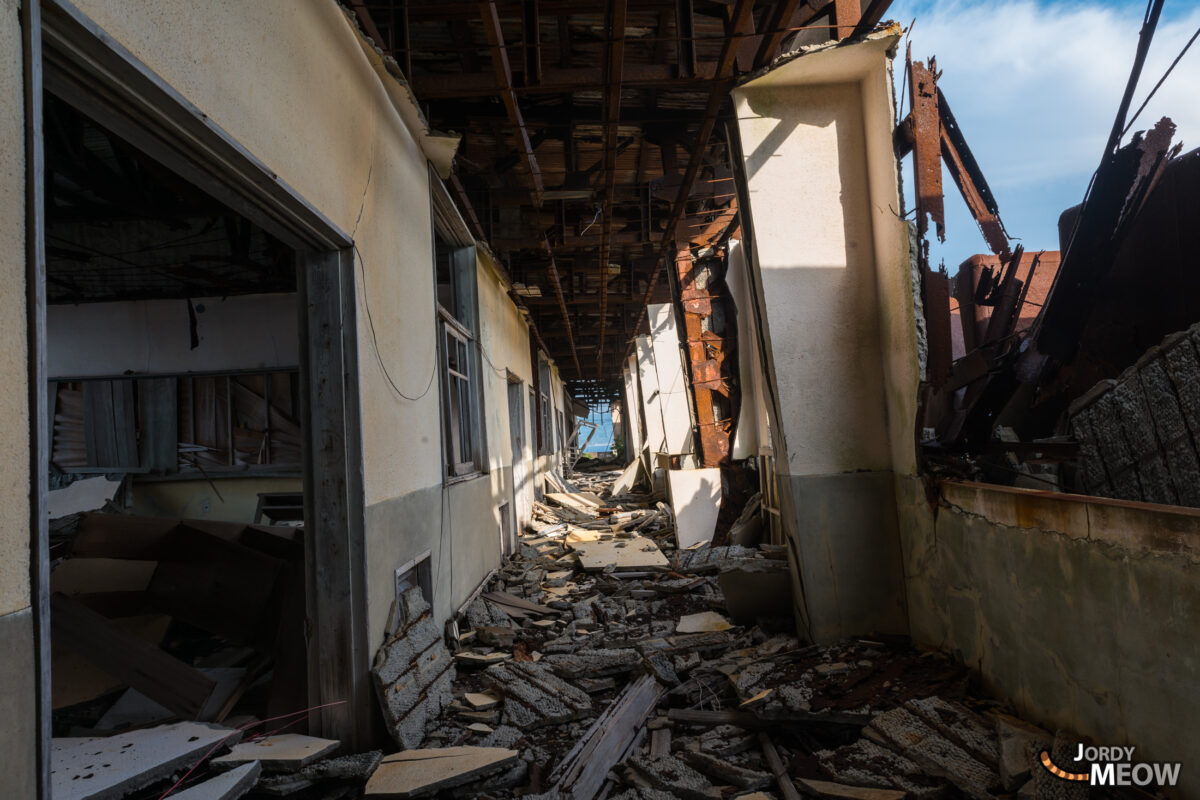
The last stair is really damaged. But you can still enjoy this great old gymnasium and auditorium.

Farewell
The school was eventually closed on March 31, 1974. For unknown reasons, one of these pictures had 1973 on it, perhaps it is to indicate the school year.
At the end, there was only a small handful of students in school. You can discover more of the history of the island through my first article about Gunkanjima. Source of those old photos: Yuji Saiga.
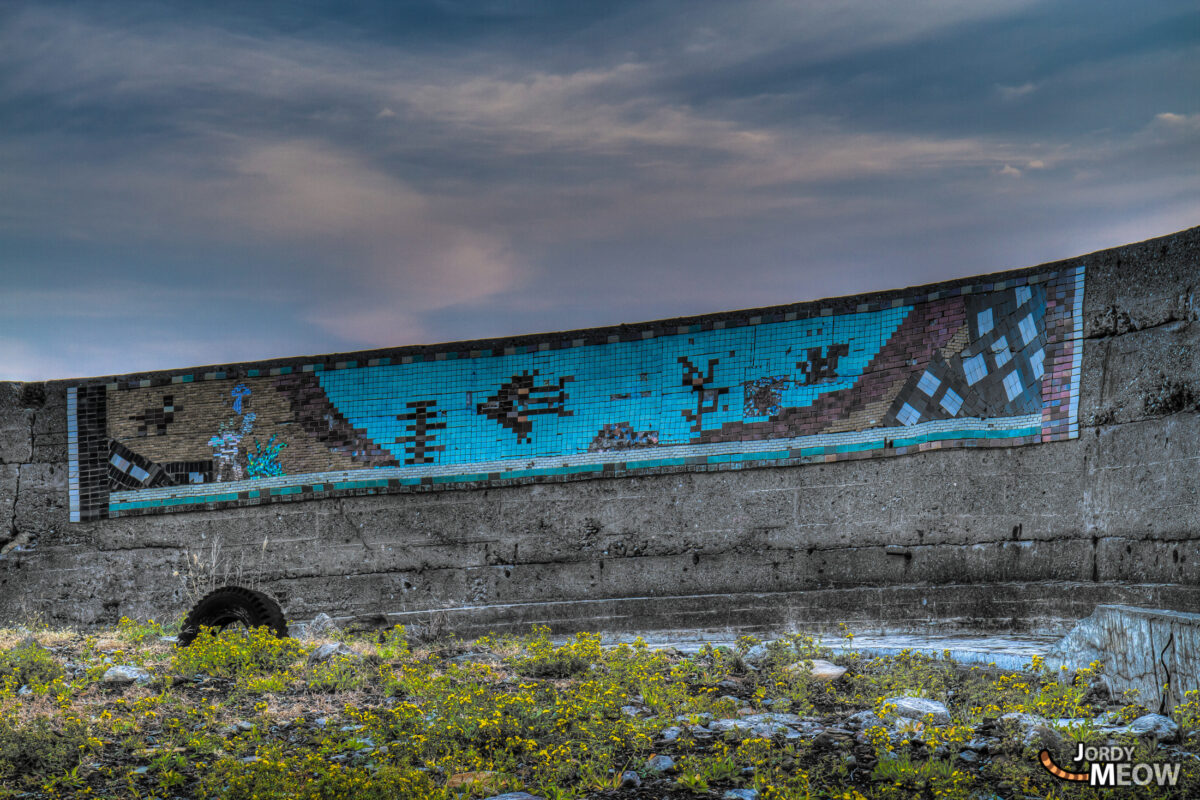
This is the end of the day. Some ghosts are trying to walk on the edge, others dancing on stage. There are echoes of raindrops falling on the moldy ground. Here is a final scene and a few last rays of sun before the night falls and the zombies are not to be taken aback.
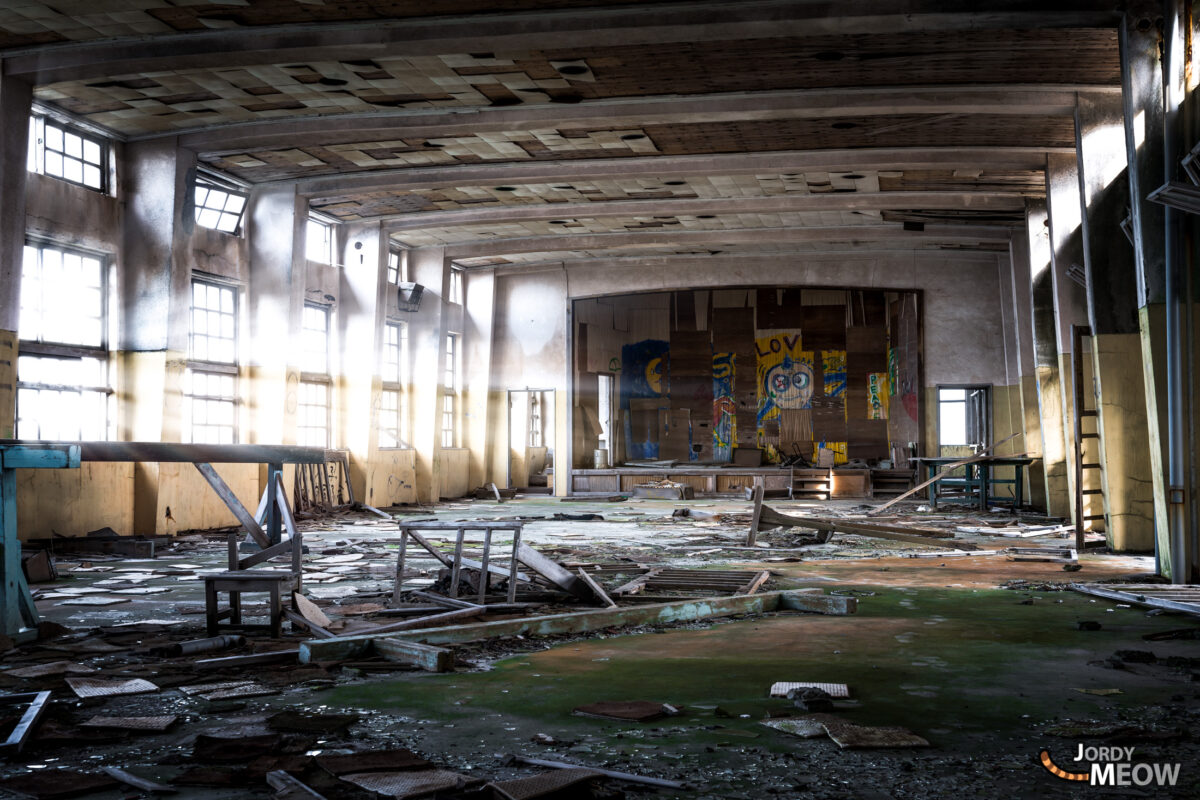
We will continue to discover Gunkanjima in future articles, but in the meantime, go check the summary: Gunkanjima: Stories & Photos.
And for more awesome content about Japan, follow Jordy Meow on Instagram ! 🎵

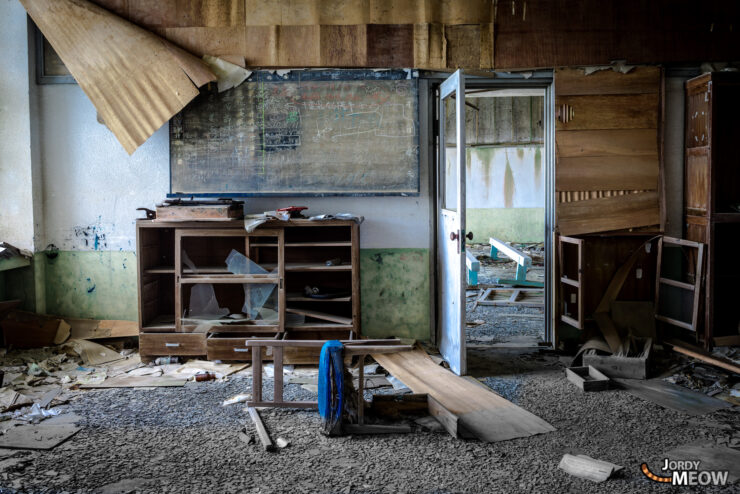

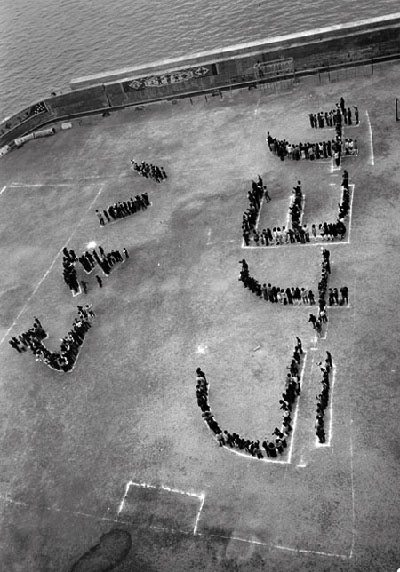
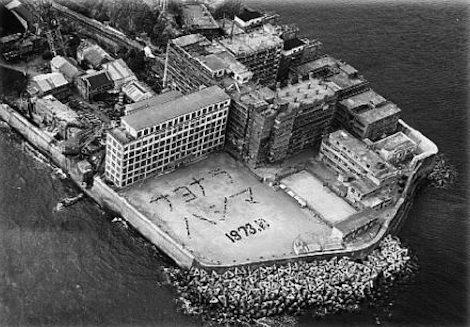
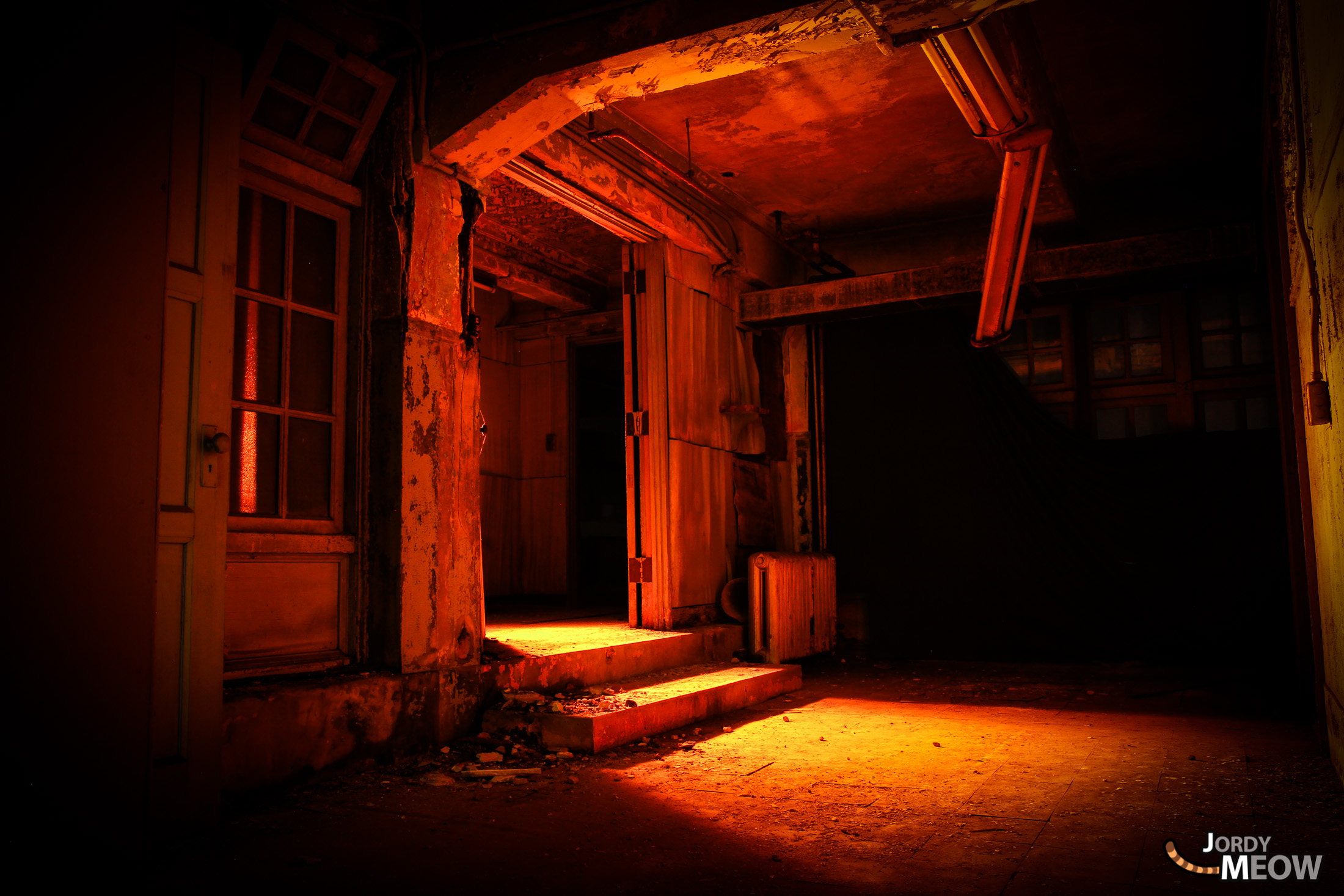
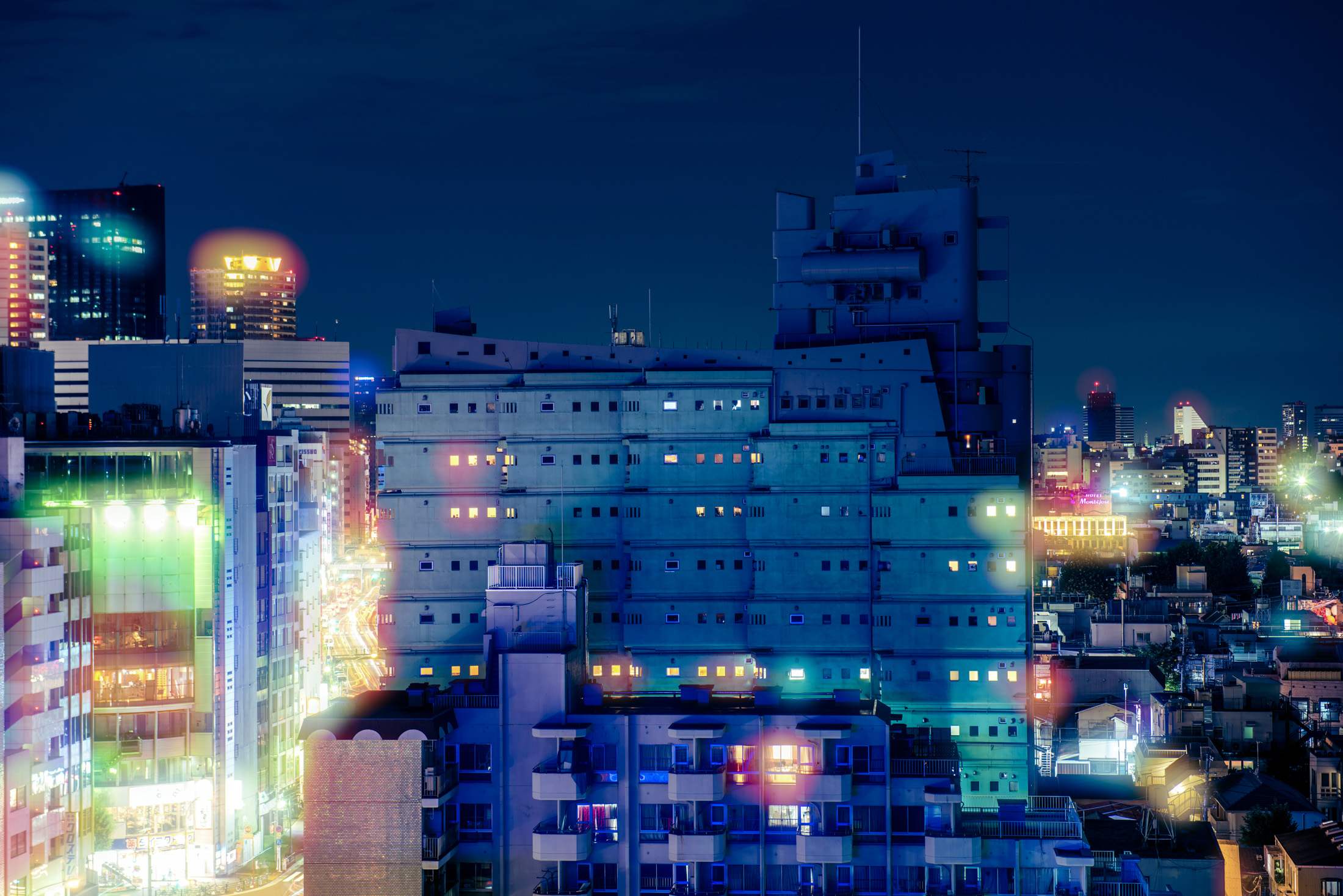











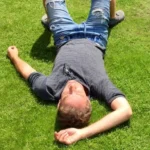
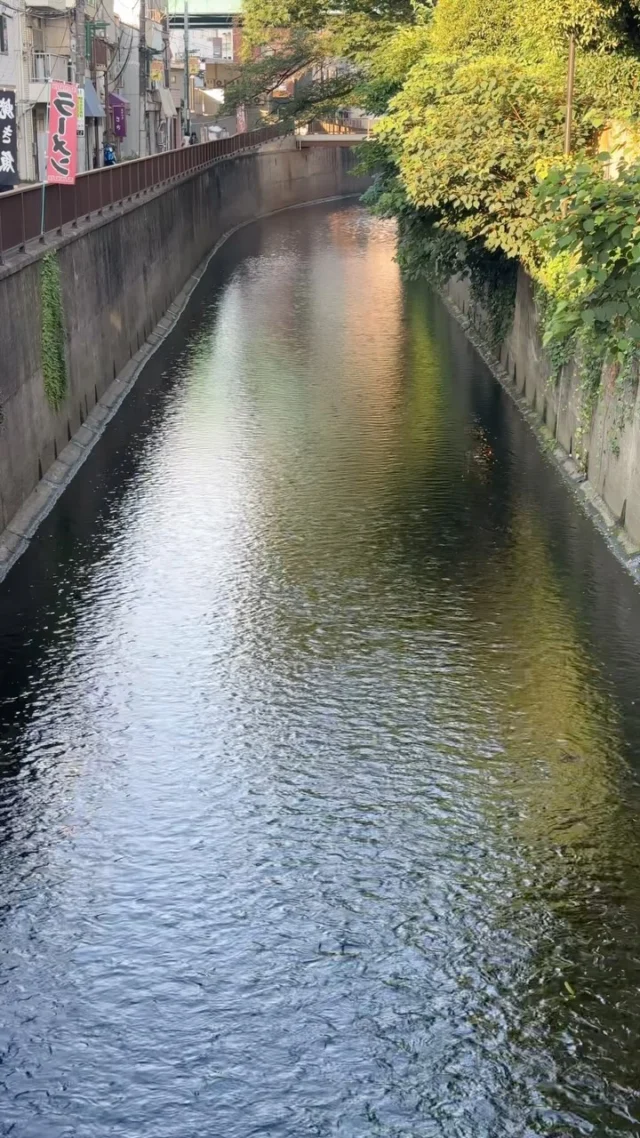
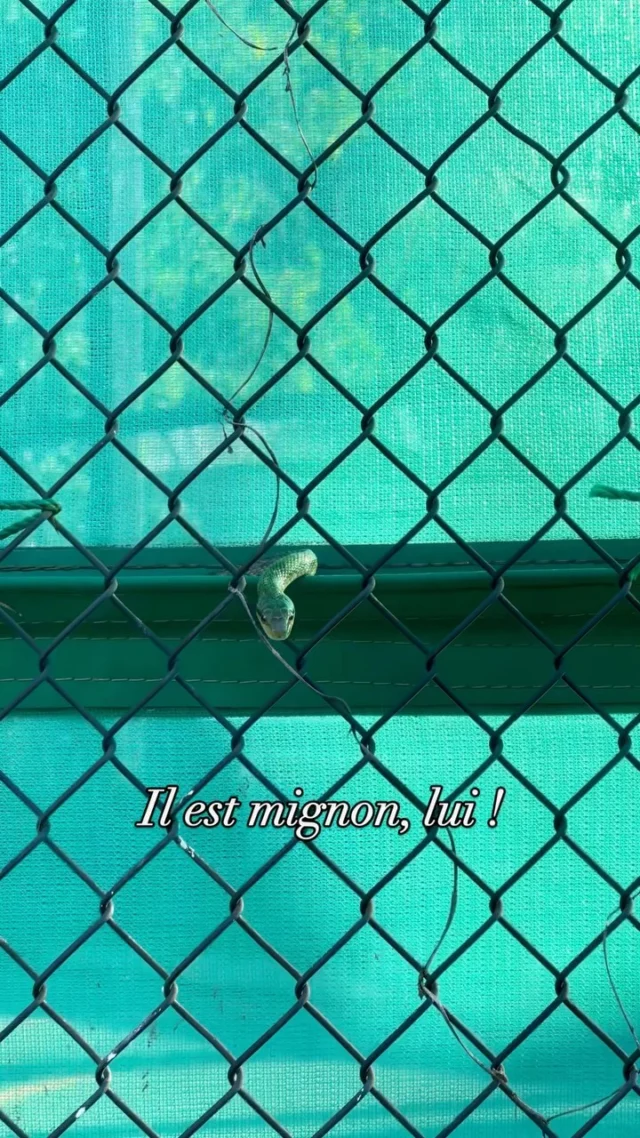

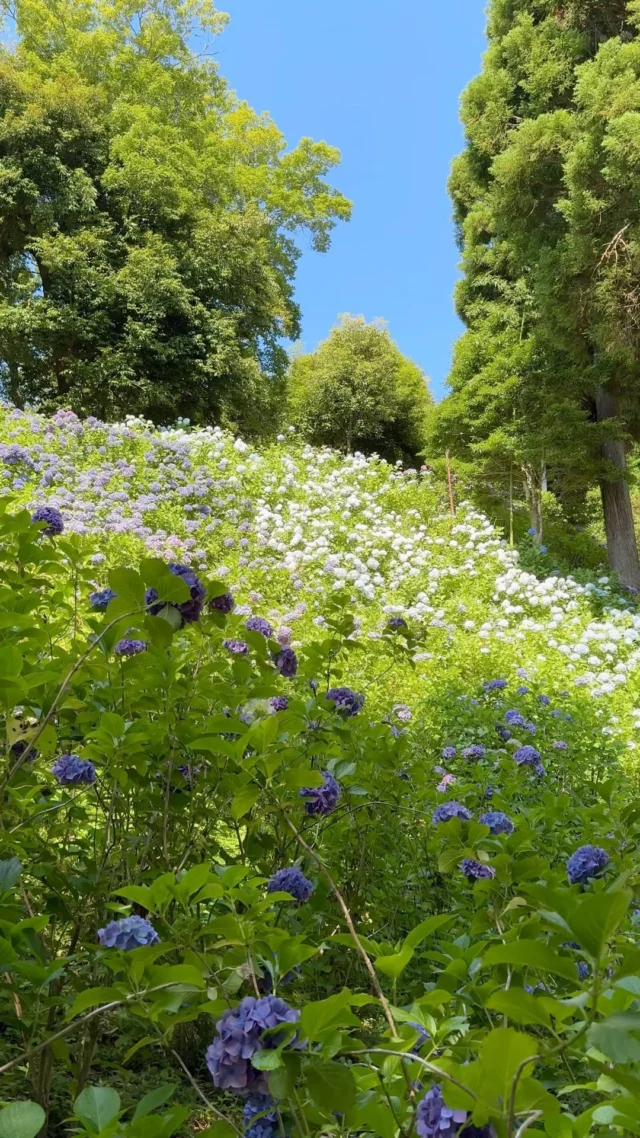
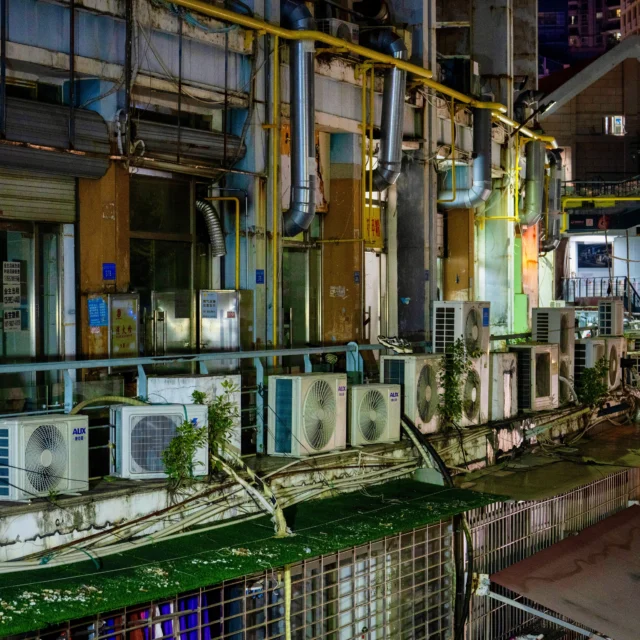
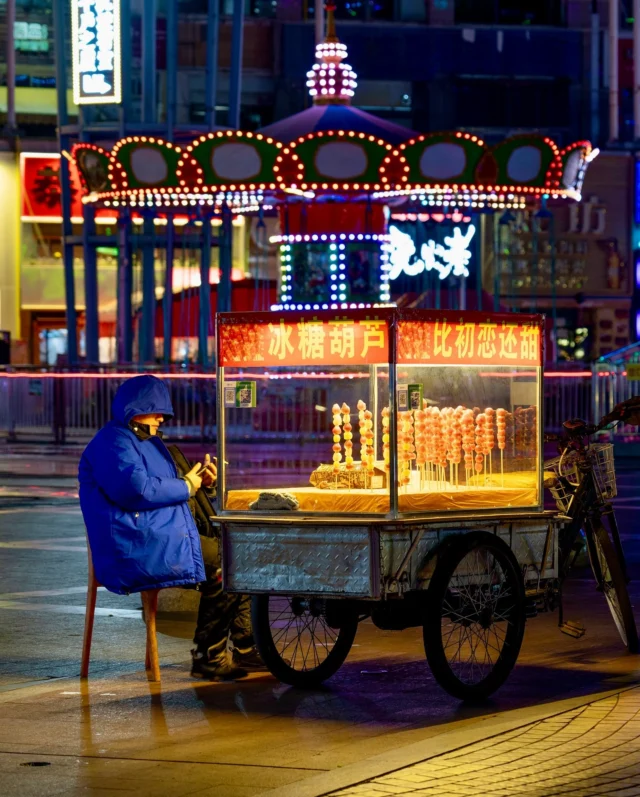
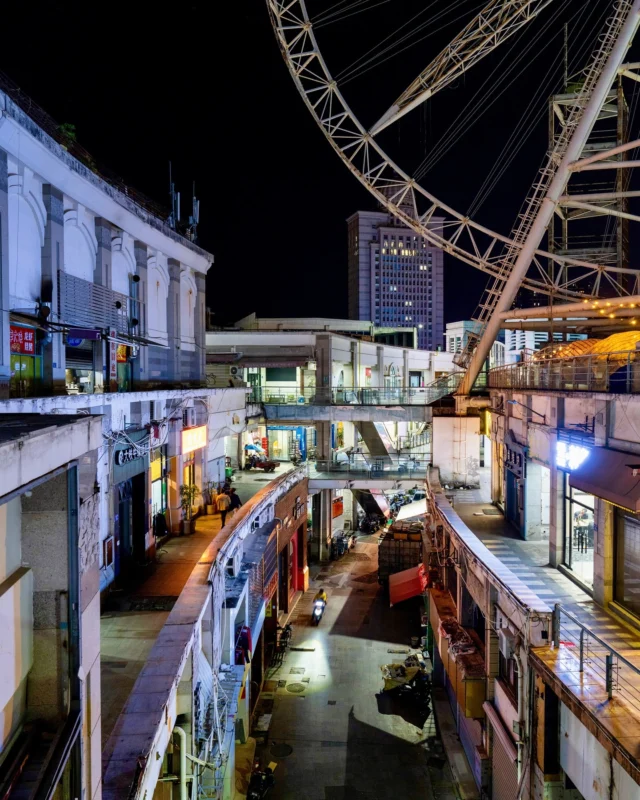
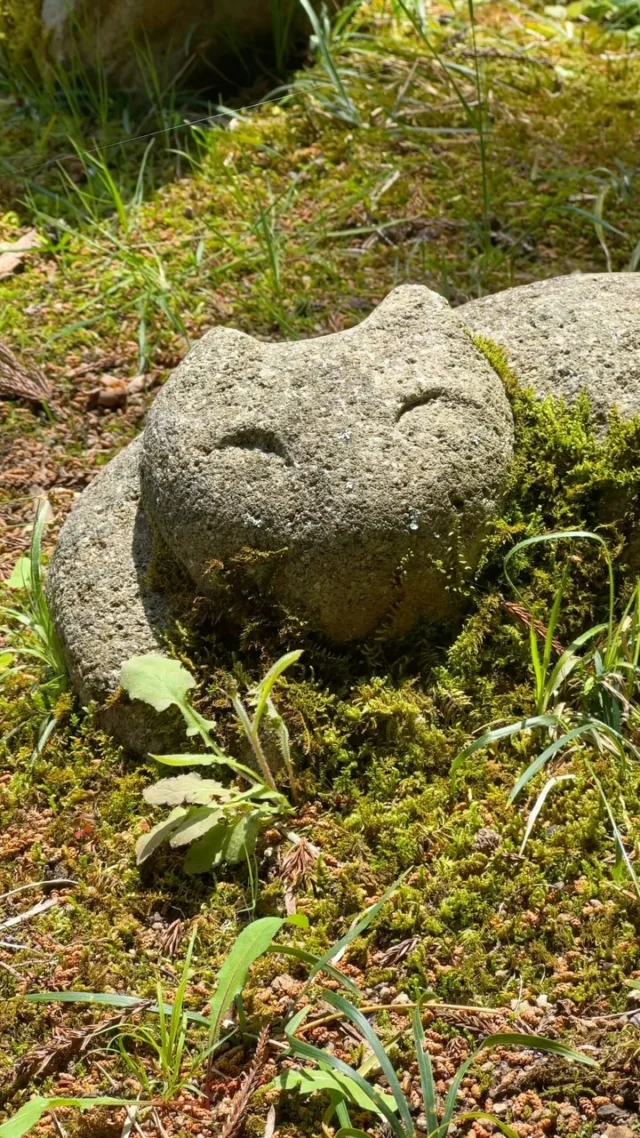
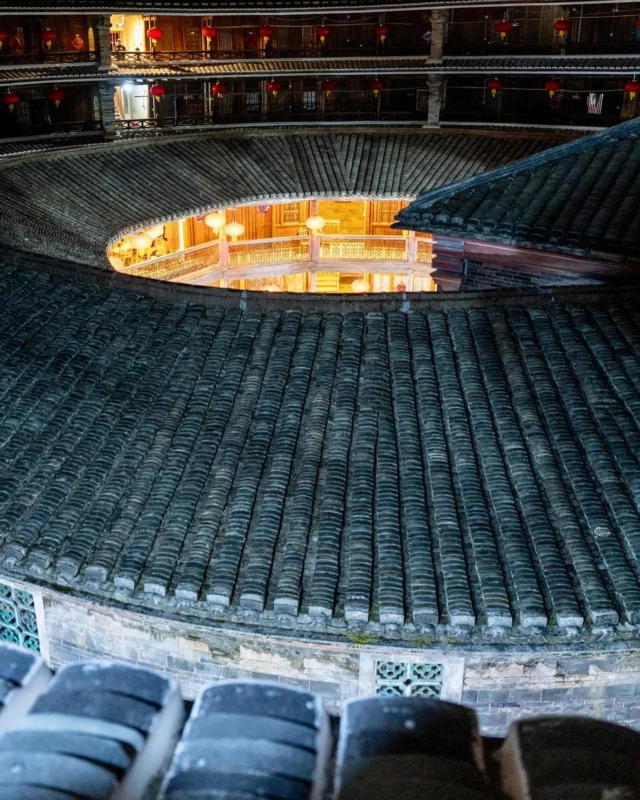
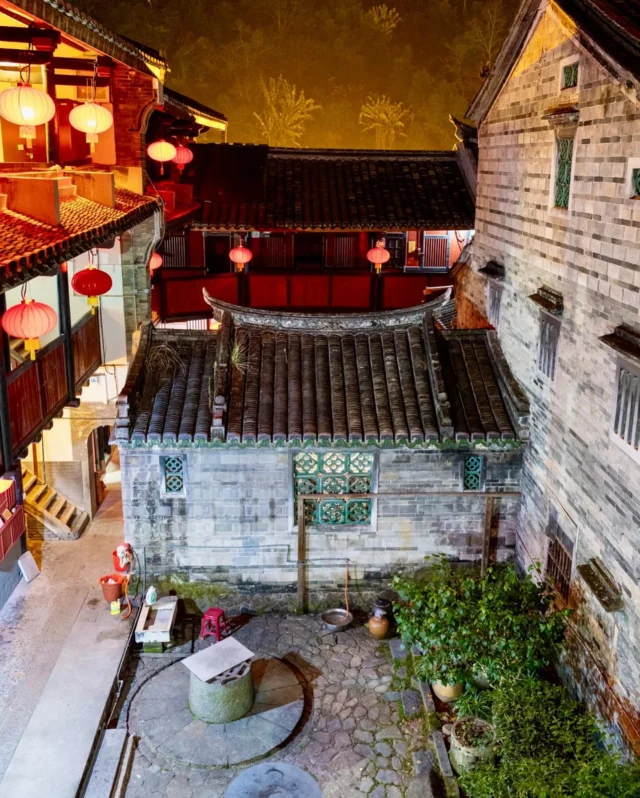
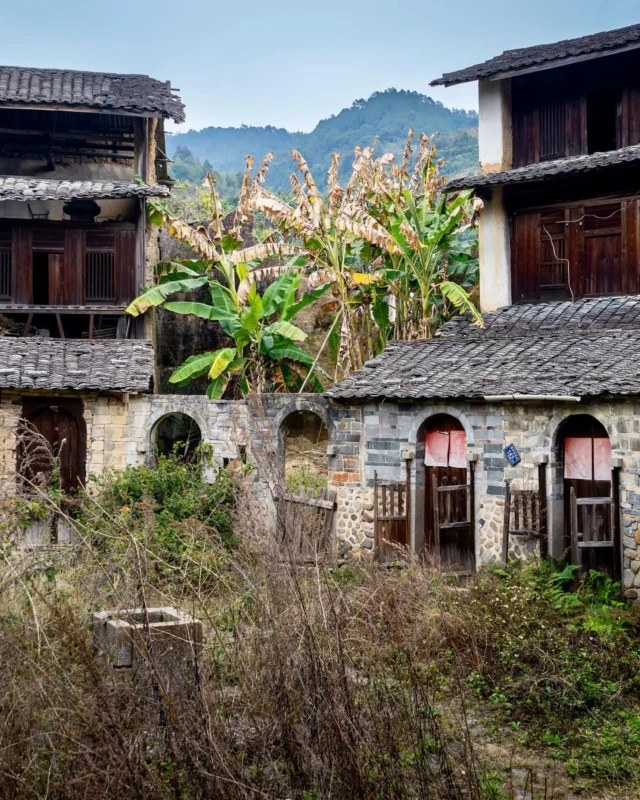
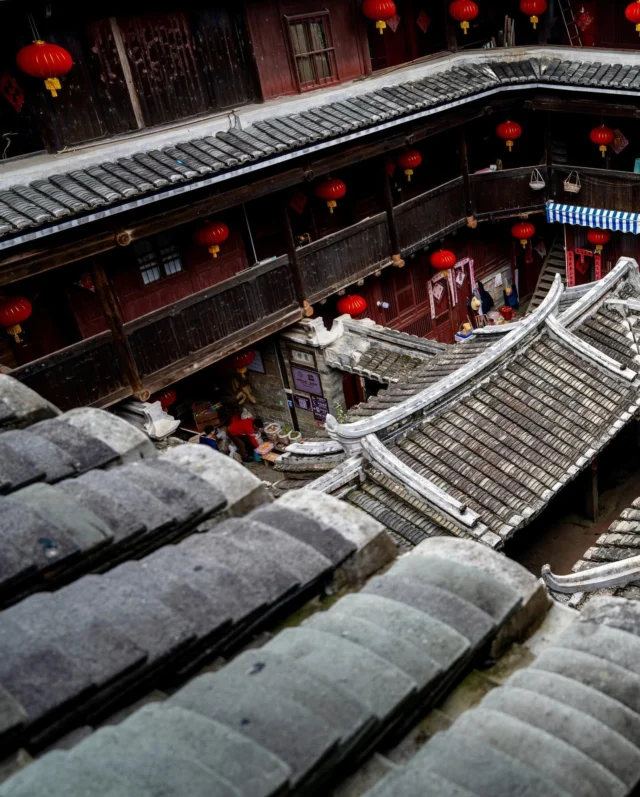
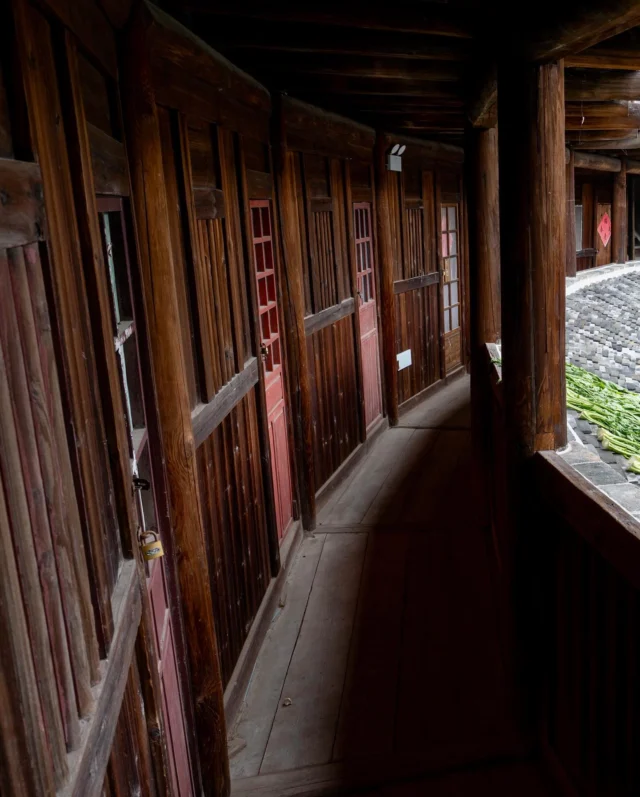
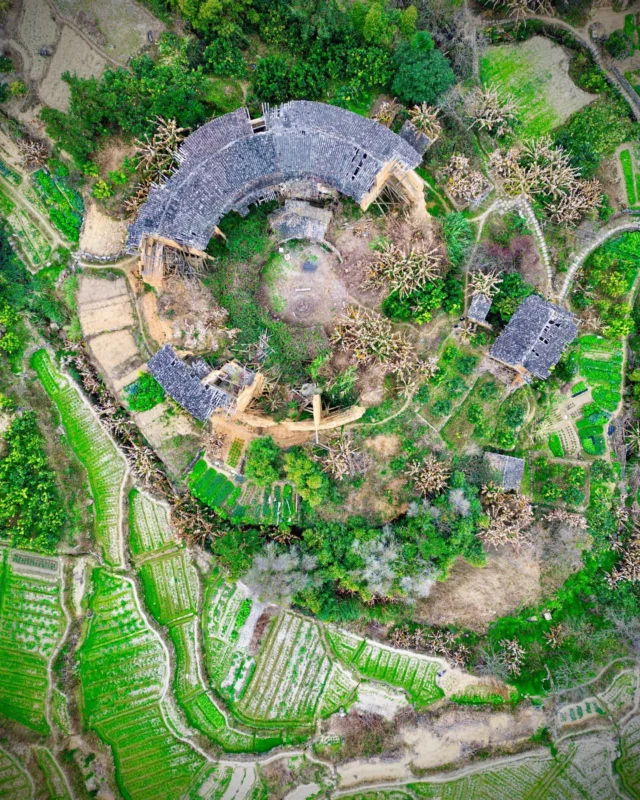
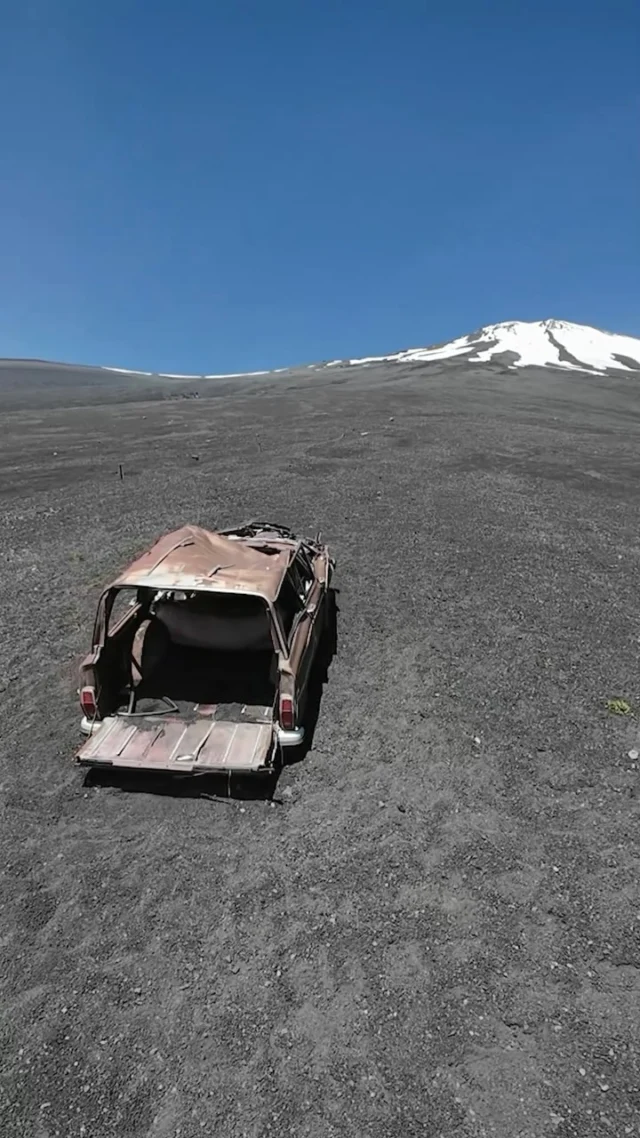
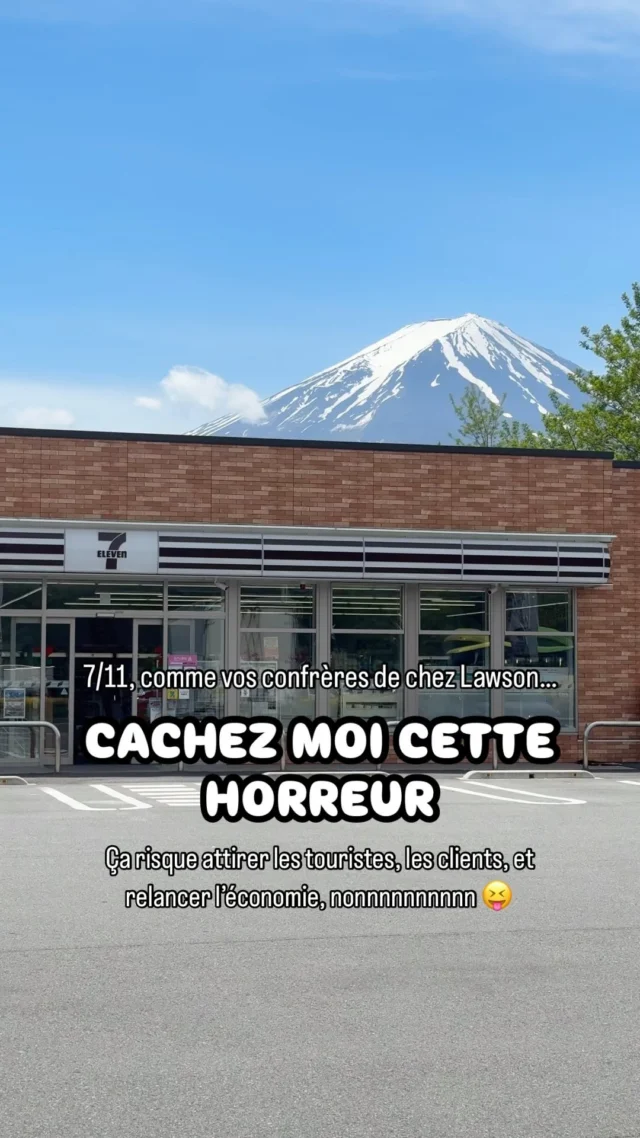


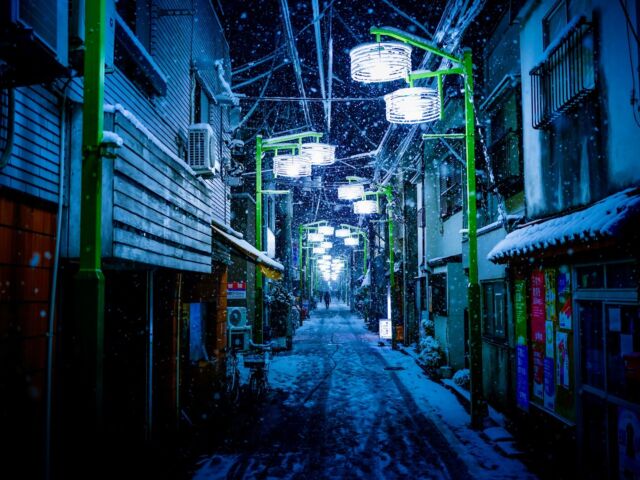
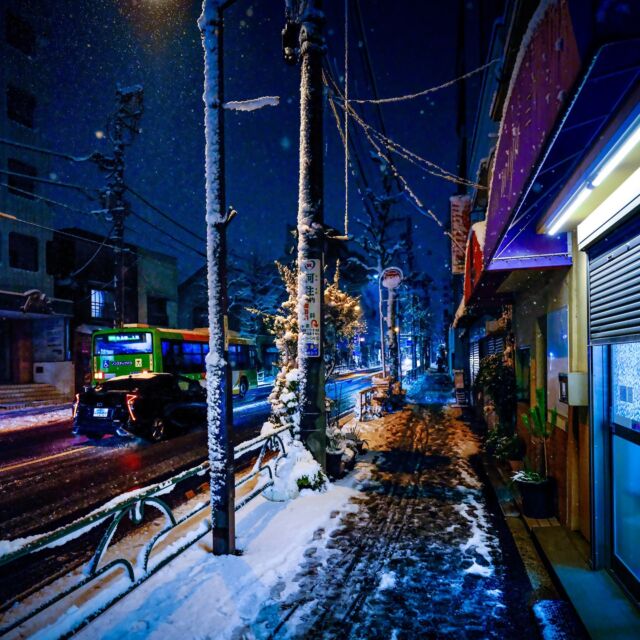
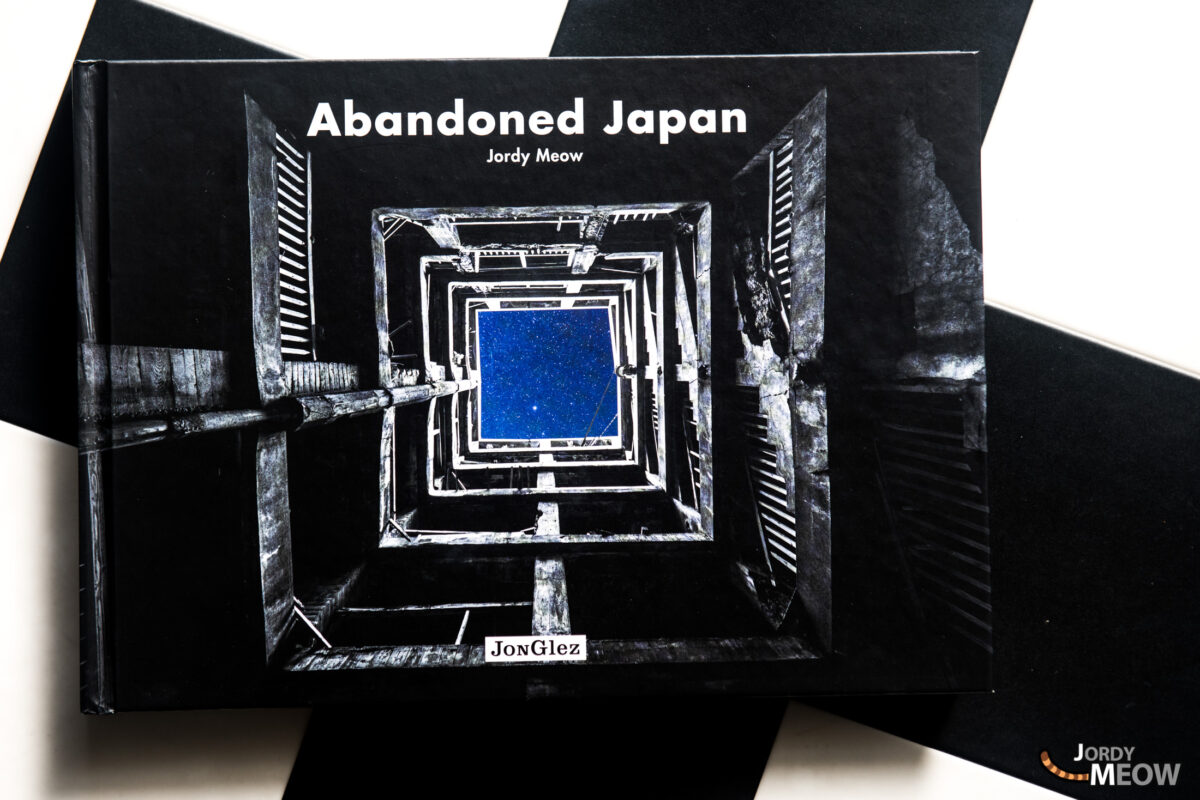

















Wow, these photos are amazing!
I’ve been to Gunkanjima myself and I’m still amazed how you managed to sneak in there!!! *g*
Hey hello! 🙂 Thanks a lot! Actually I quickly looked at your website and there are a lot of great photos as well, with a lot of interesting places! I’ll follow you from now 🙂
My photos are by far not as good as yours! I hope I can learn from your photos! *g*
Thanks so much.
I’m so behind schedule. I’ve been to 41 of Japan’s 47 prefectures by now and I’m trying to get the last 6 this year, so I’m quite busy traveling rather than posting! 😉
Oh that’s interesting, I never thought about it but I think I’ve been to almost all the prefecture as well (except Aomori and Akita), but there are too many things to discover in each of them! I’ve been living in Tokyo for quite some time now, but I realized that I am probably missing the best, so I’m spending some time trying to find the nice little streets here and there, escaping the big urban crossroads…
I never thought about it until recently. I think it was because Japanese people kept asking me about it. So I finally set down and counted. However, I only counted those where I really went for proper traveling. I actually have been to some of the 6 remaining prefectures, but not really for traveling or anything.
I just came back from a Tohoku trip in May. It was my first time in Aomori and Akita! Both truly beautiful and interesting prefectures. I hope I can go again some time.
Please contact me when you travel somewhere, during the week-end I would always be happy to join. My travels aren’t focus on haikyo only (maybe only 1/4 of them actually) but I do like going off the beaten paths a lot. Let’s keep in touch and organize something by email 🙂
Sure thing! 🙂
The only real problem is that my weekends are on Sunday and Monday. I do work every Saturday!
I guess we can meet up on Sundays then. Let me know when you’re going somewhere and I might be up for the trip 🙂
I’d love to! ^-^
If it’s just a daytrip (e.g. Sunday) I won’t be able to go too far away from where I live, though.
And I guess same goes for you, too 😉
The calculating machine is a Diehl. Not a Friden. It says so on the front of the machine.
I actually tried to read the name and couldn’t… thanks for helping! A friend of mine found the exact one on Google, he commented about it on the French version of this page. There were so many mechanical calculators at this time!
Amazing pictures as always. Can’t keep thinking about those children in the last pictures, wish they could all stumble upon these pics and remember. Nice blue sky as well.
Thanks a lot Lolo ! Finally you got yourself a nickname… haha, should we call the team “The Mollos”? :p I really hope they do come back sometimes, those students, and sit on those chairs, trying to remember how it was like 40-50 years ago. They are so lucky everything is still there after such a long time. My primary school was destroyed a few years ago and it made me so sad! Only the people left, but we have no special place to share our memories anymore. This kind of abandoned school is the closest I can find to my previous one…
I Love your tour to meet the Ghost Teachers and pupils!!! There are so many ghosts in Japan and all sorts of unseen yet strongly felt things. Also so much man-made stuff with stories to tell. Thank you for your Totoro Trip. I want to sign up for your old and new tours. XXXX
Thanks Jojo! I would love to run ghost tour on that island, that would be quite fun indeed!
Hi, this is really a fascinating place, a little scary too.
I found this about the calculator machine:
http://home.vicnet.net.au/~wolff/calculators/fullcalc/fullcalc.htm
That’s the one 🙂 Thank you 🙂
I will be heading here at the end of November….definitely on my Japanese bucket list. There is always something about an abandoned school that makes sombre the heart.
Enjoy your trip! Abandoned schools are fantastic. However the Gunkanjima one is quite un-approchable…
4.5